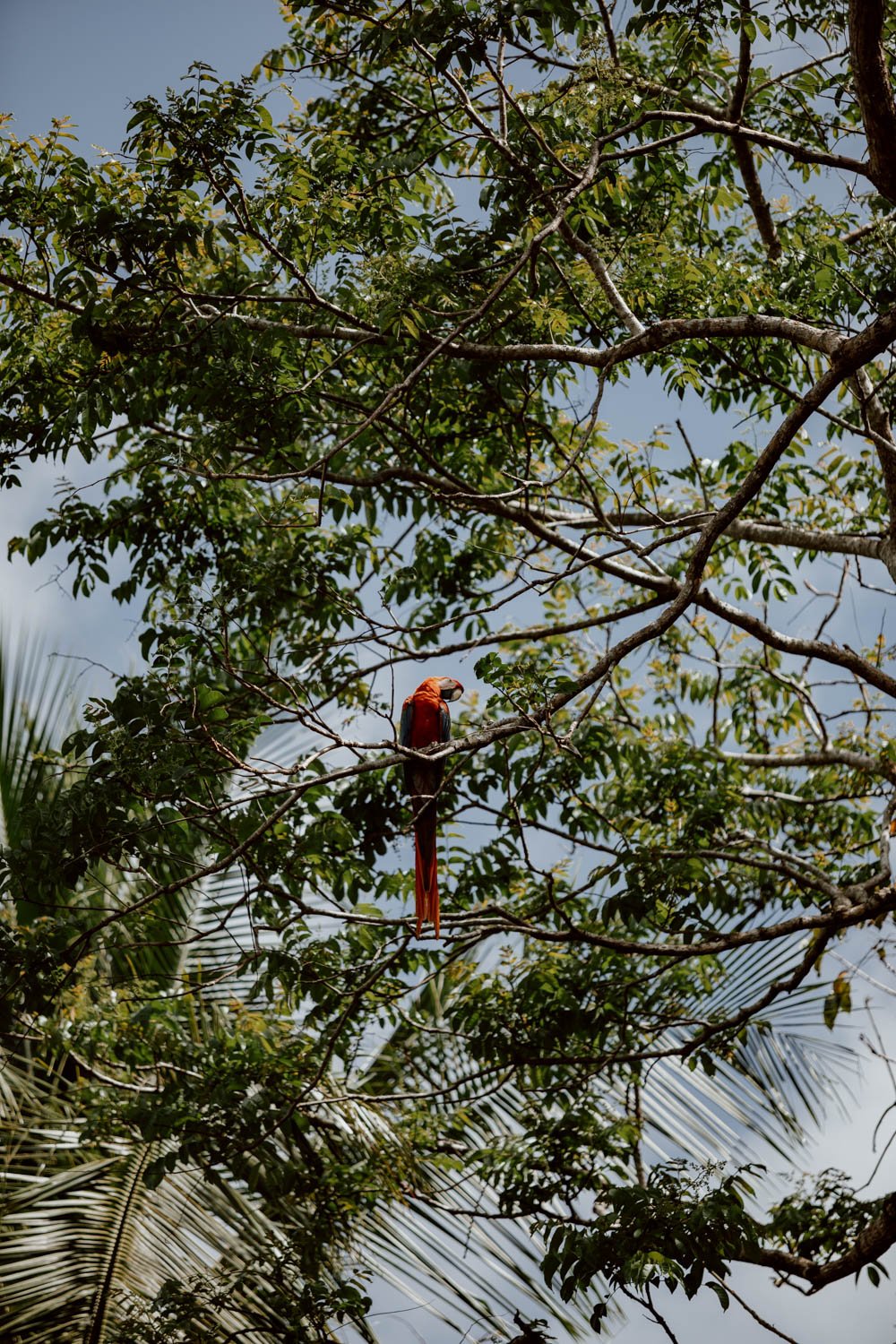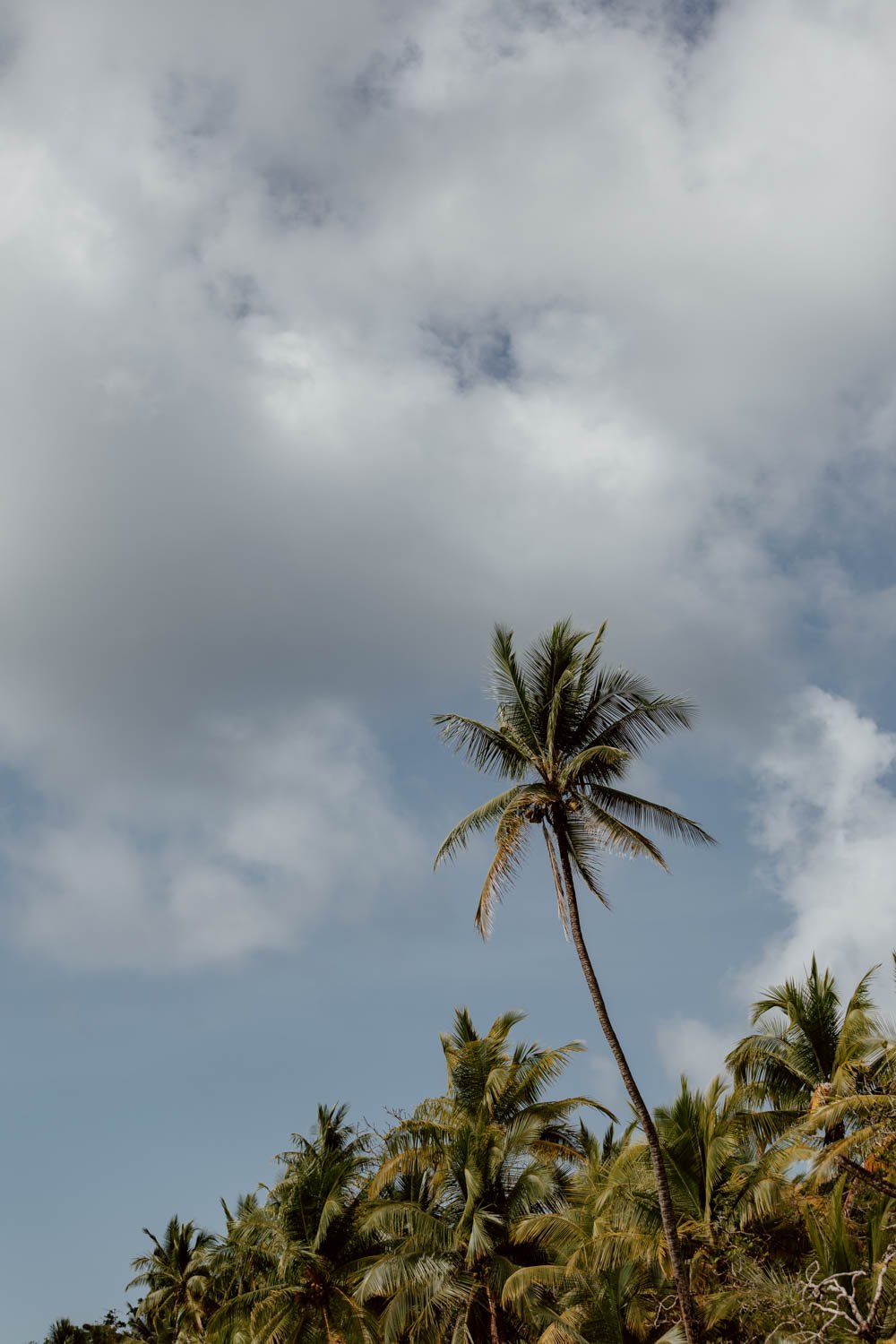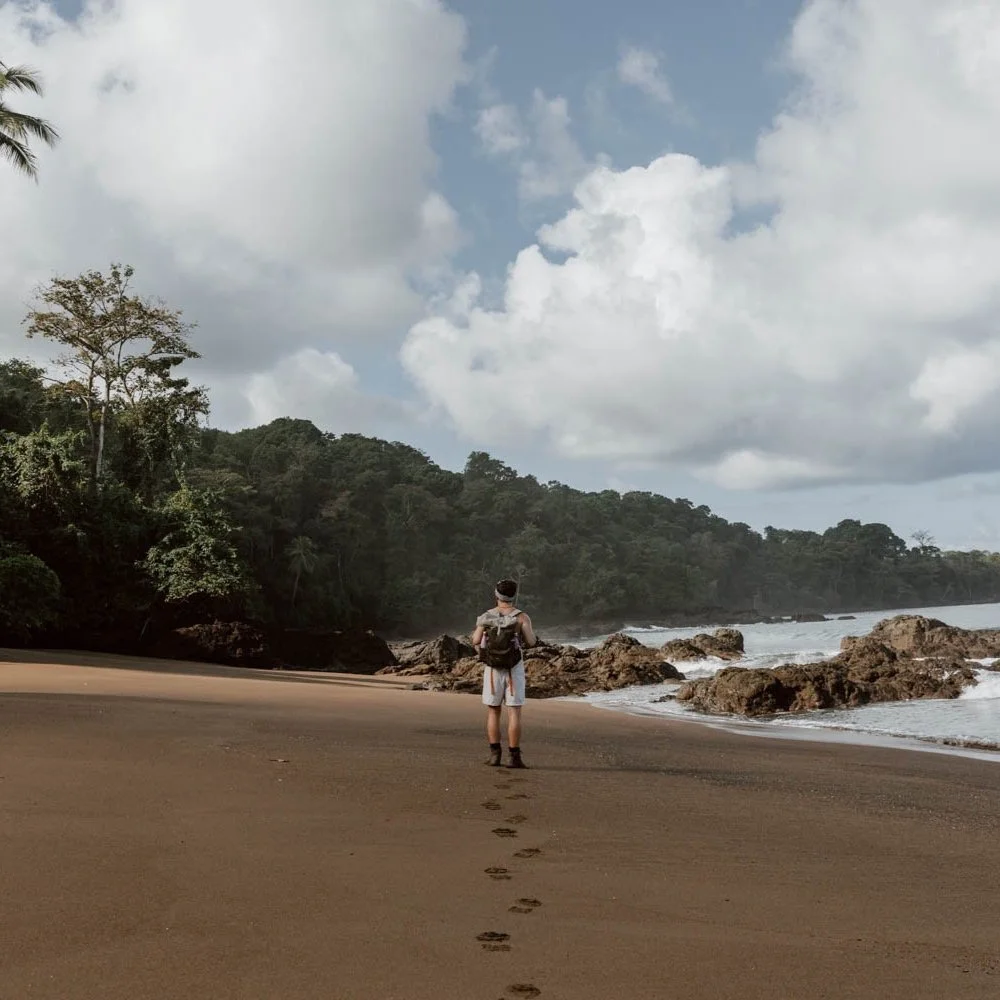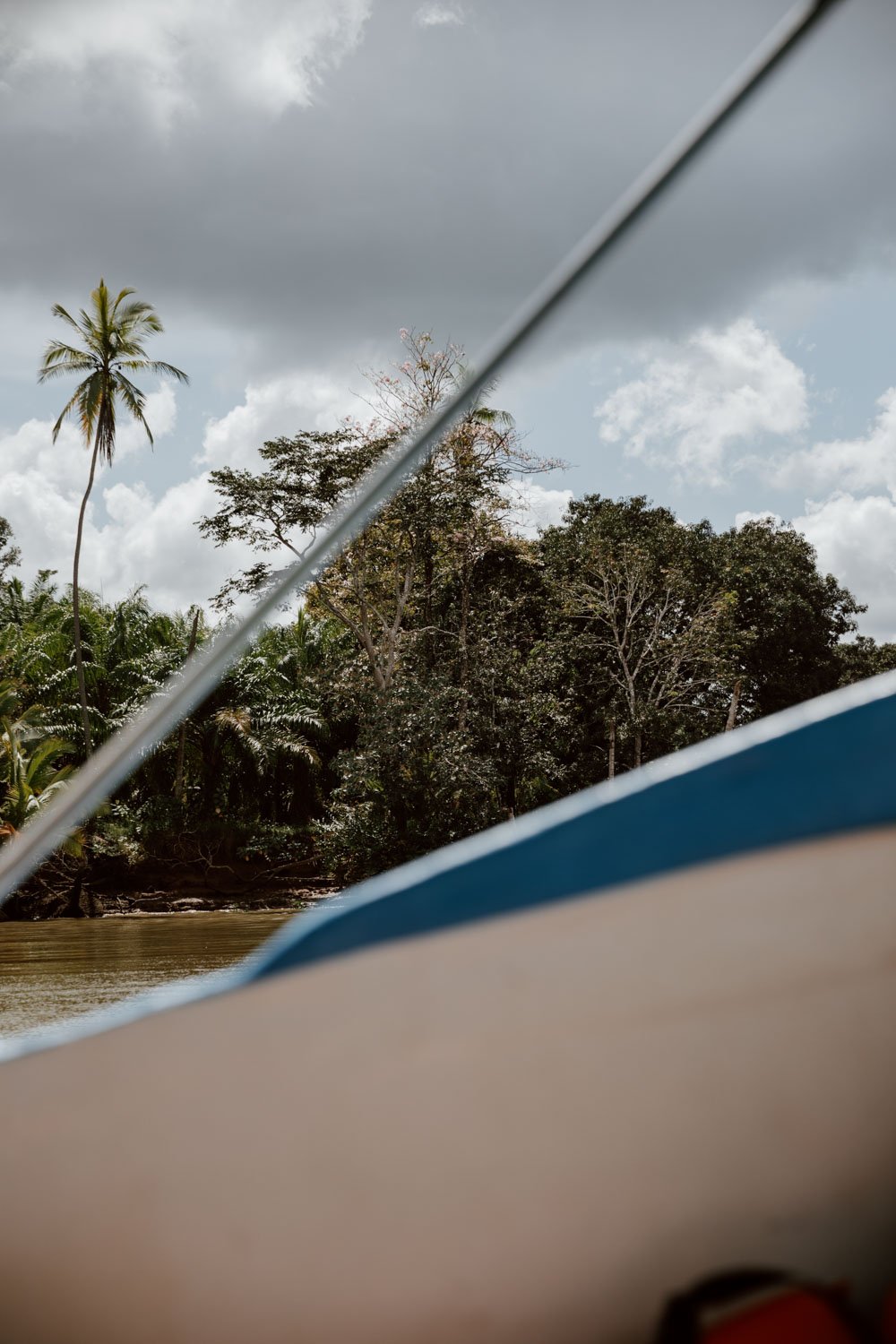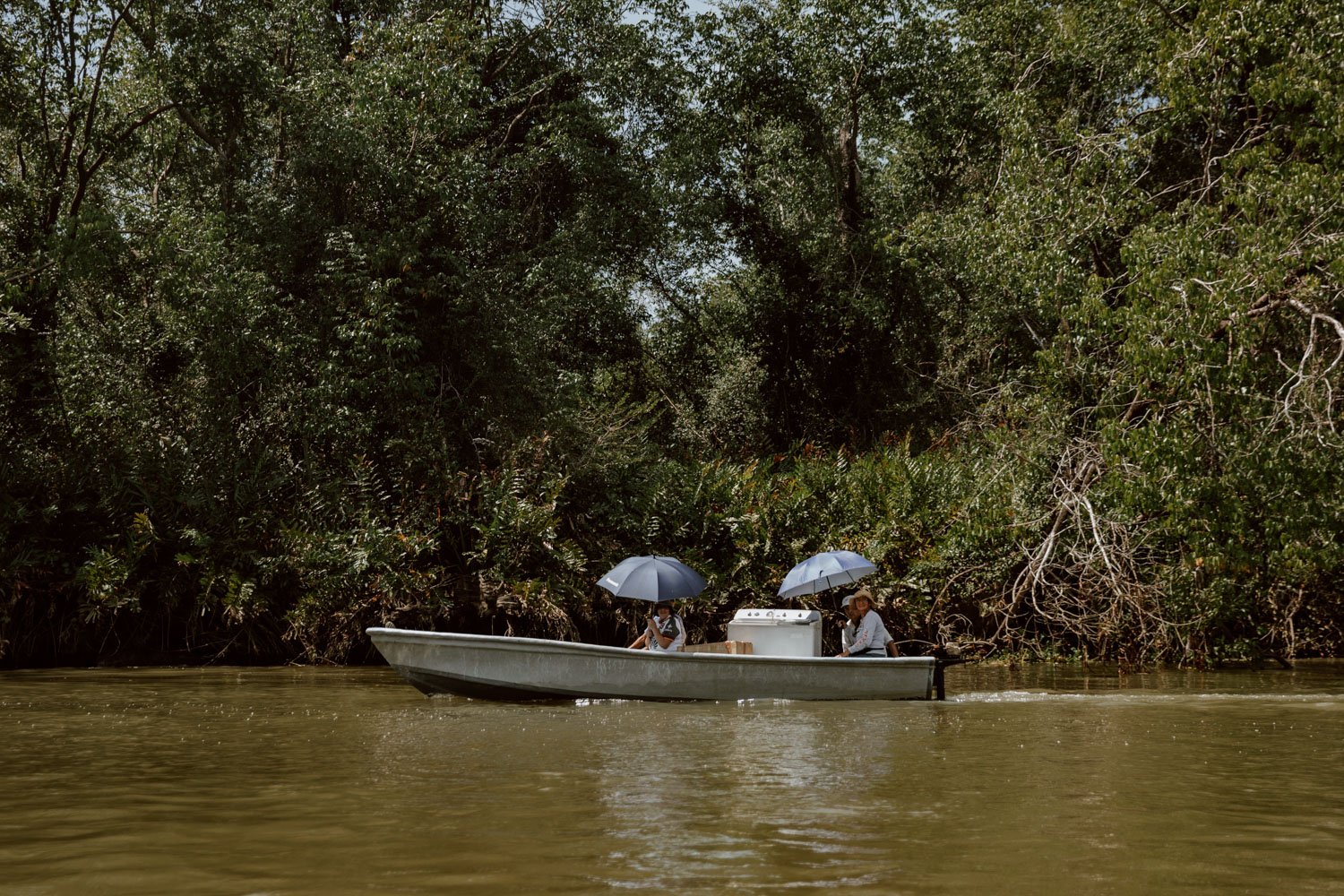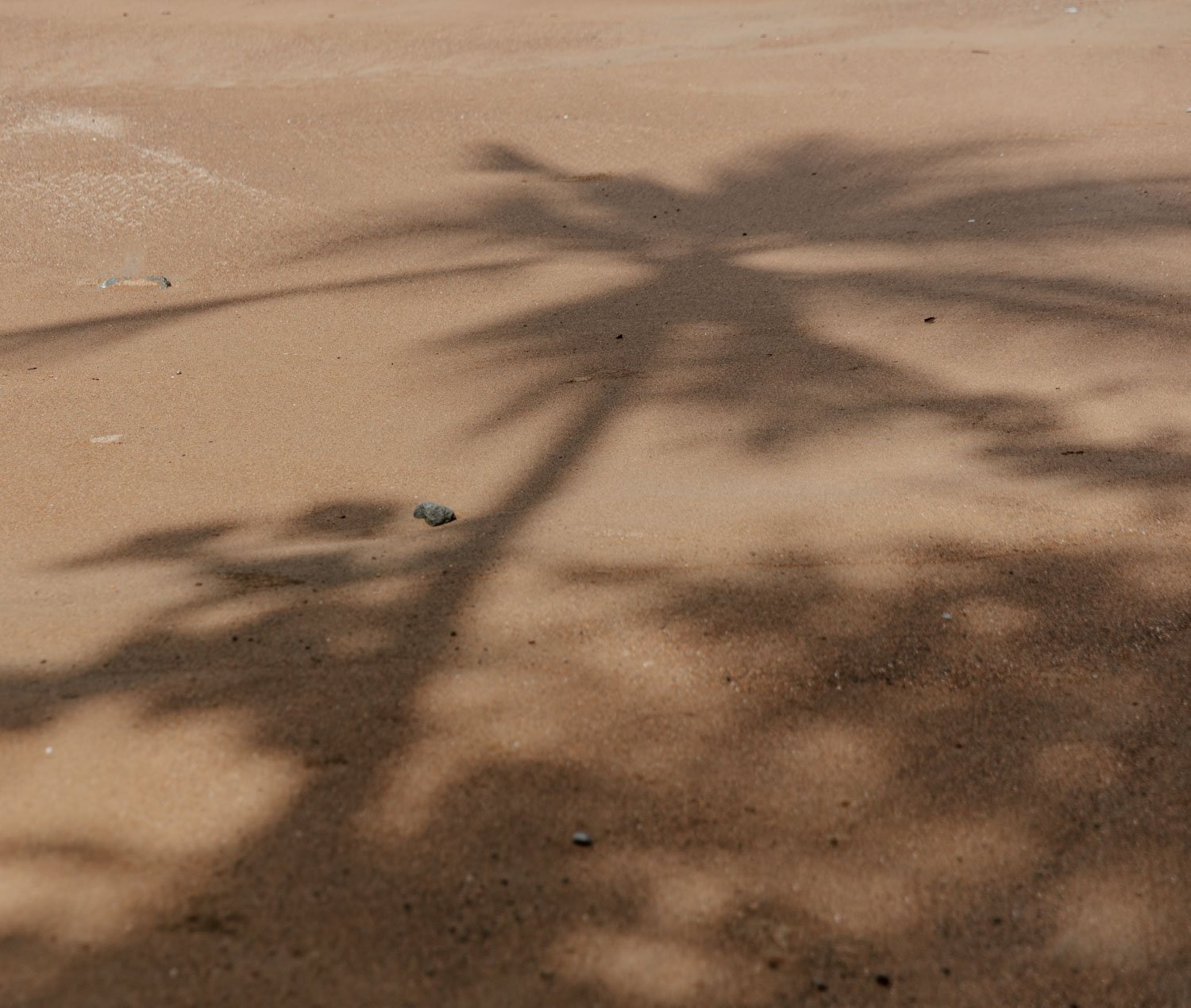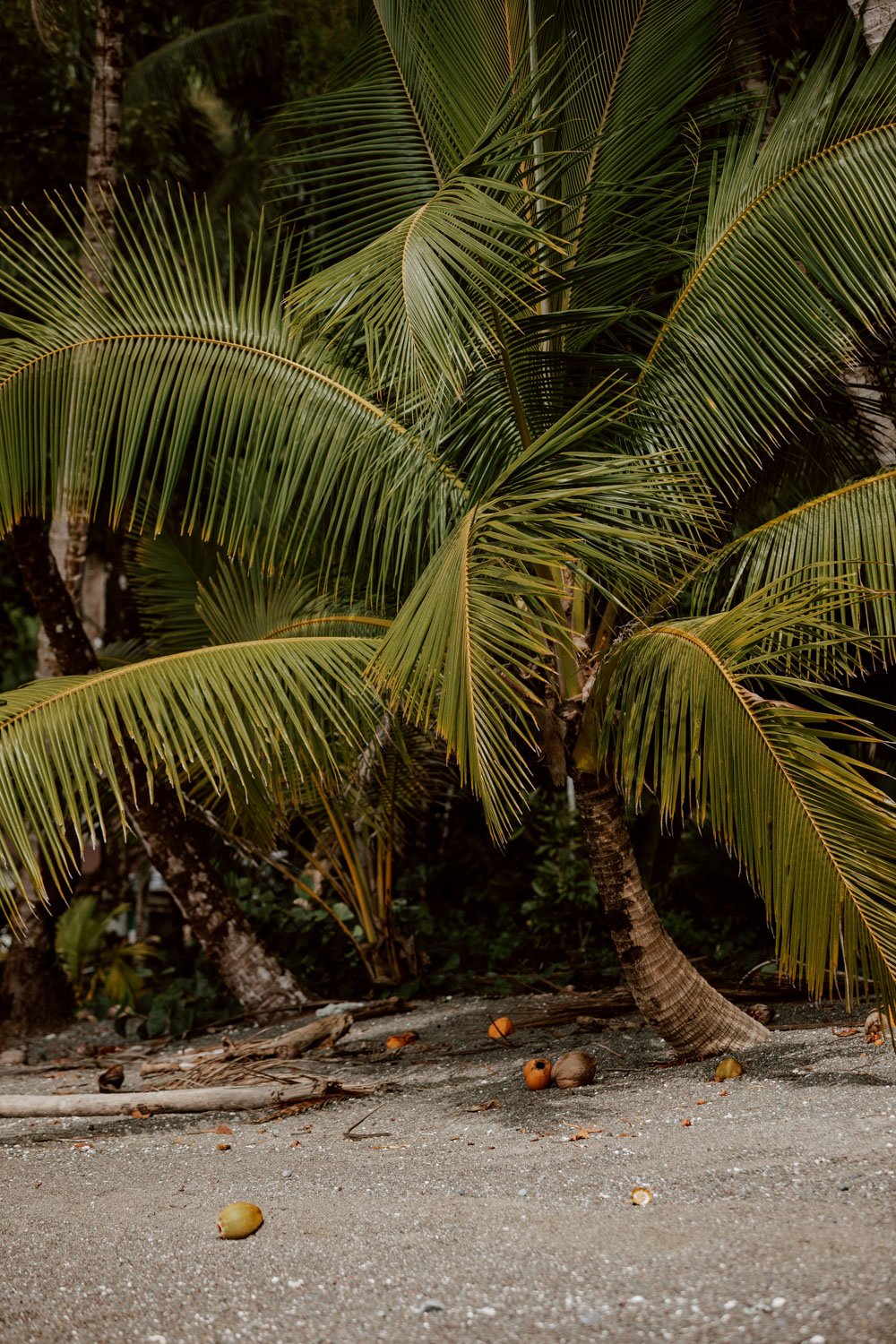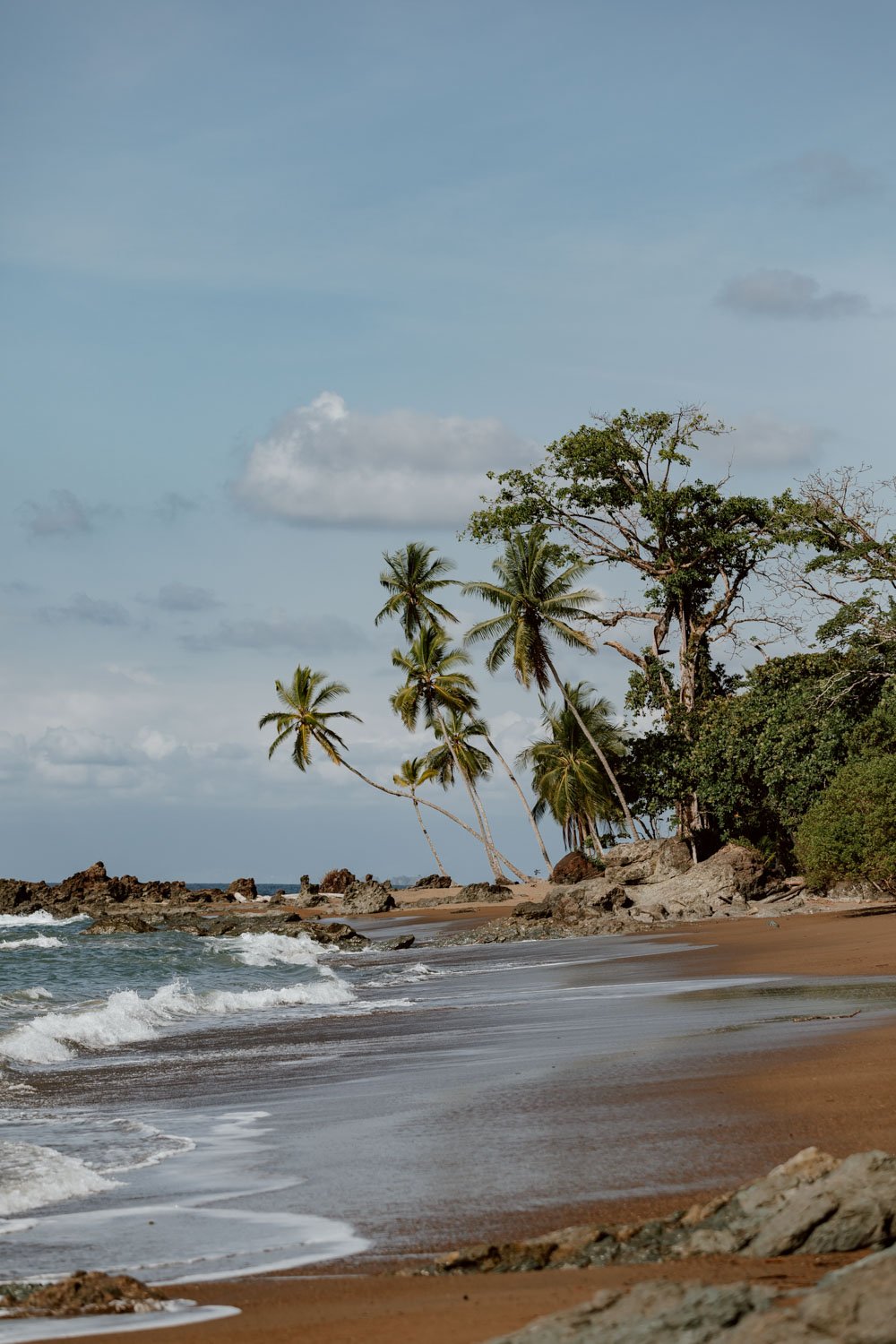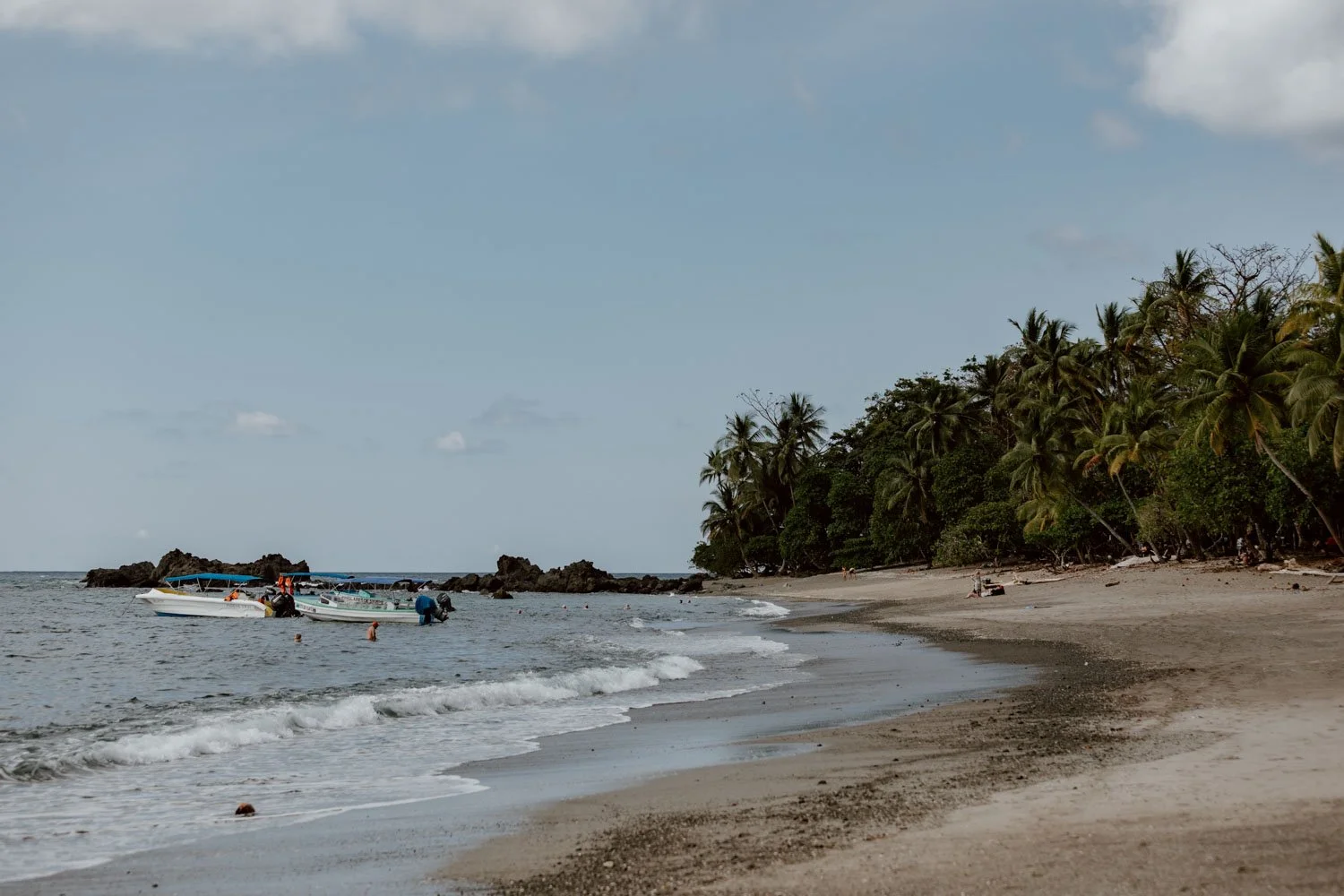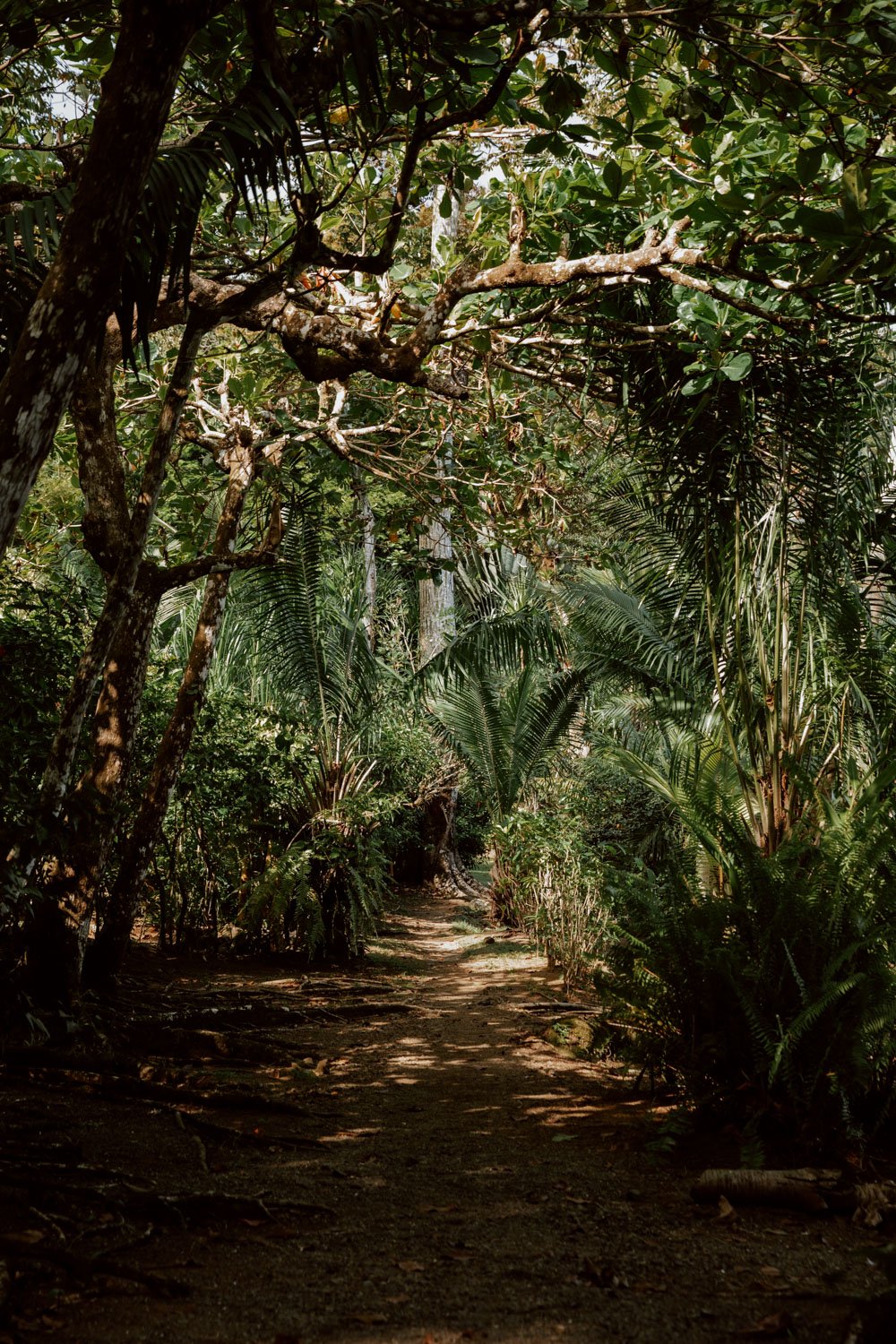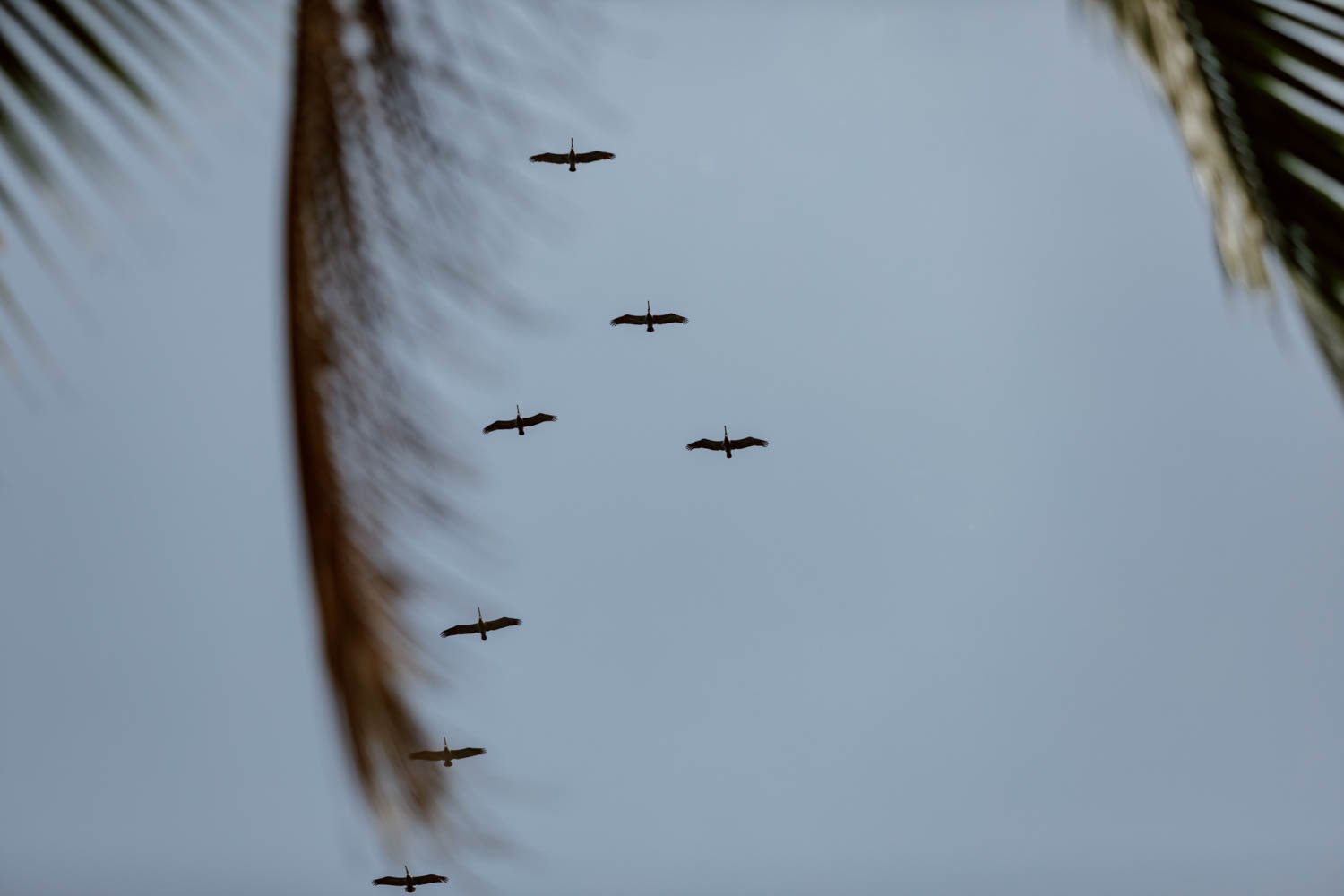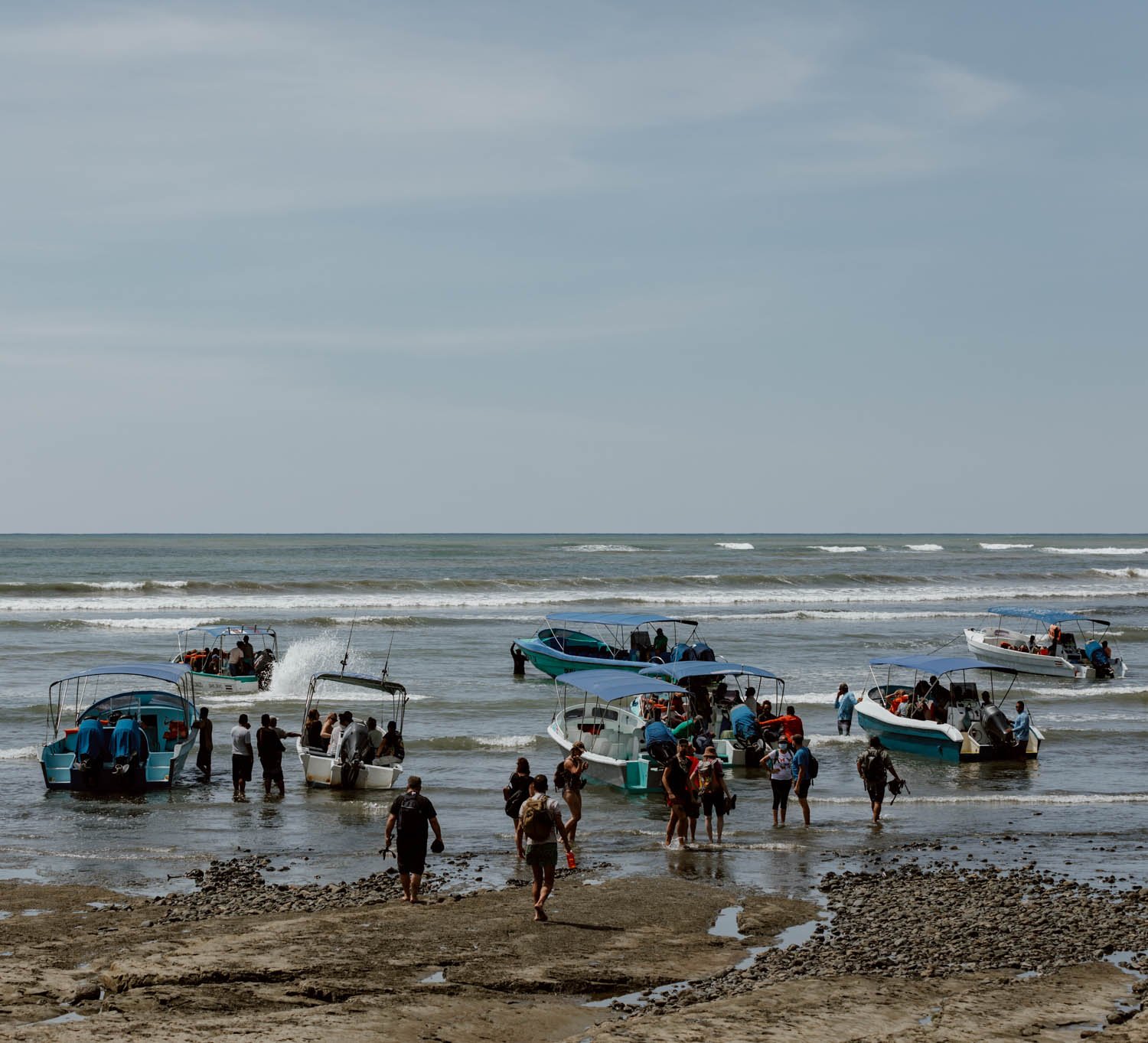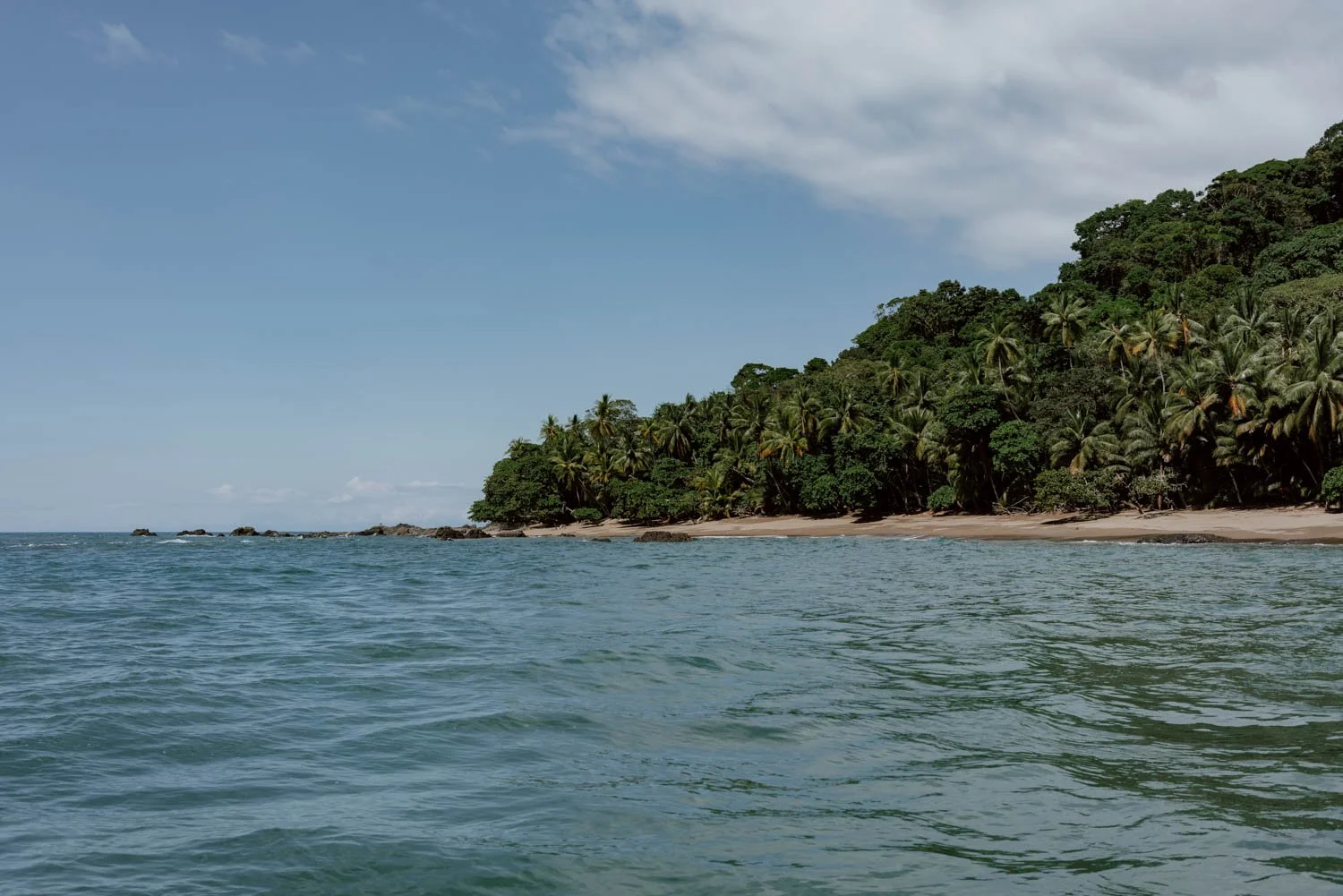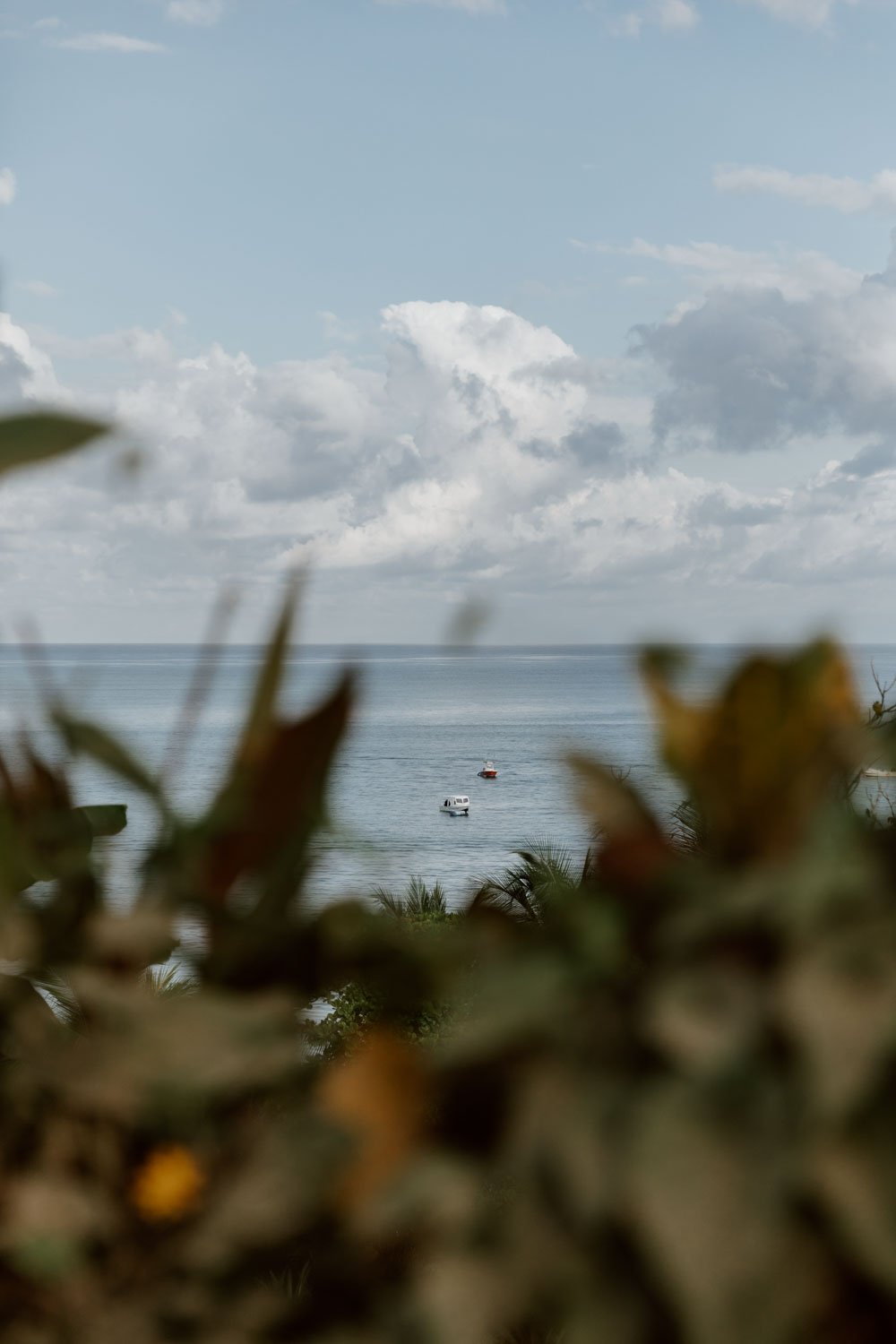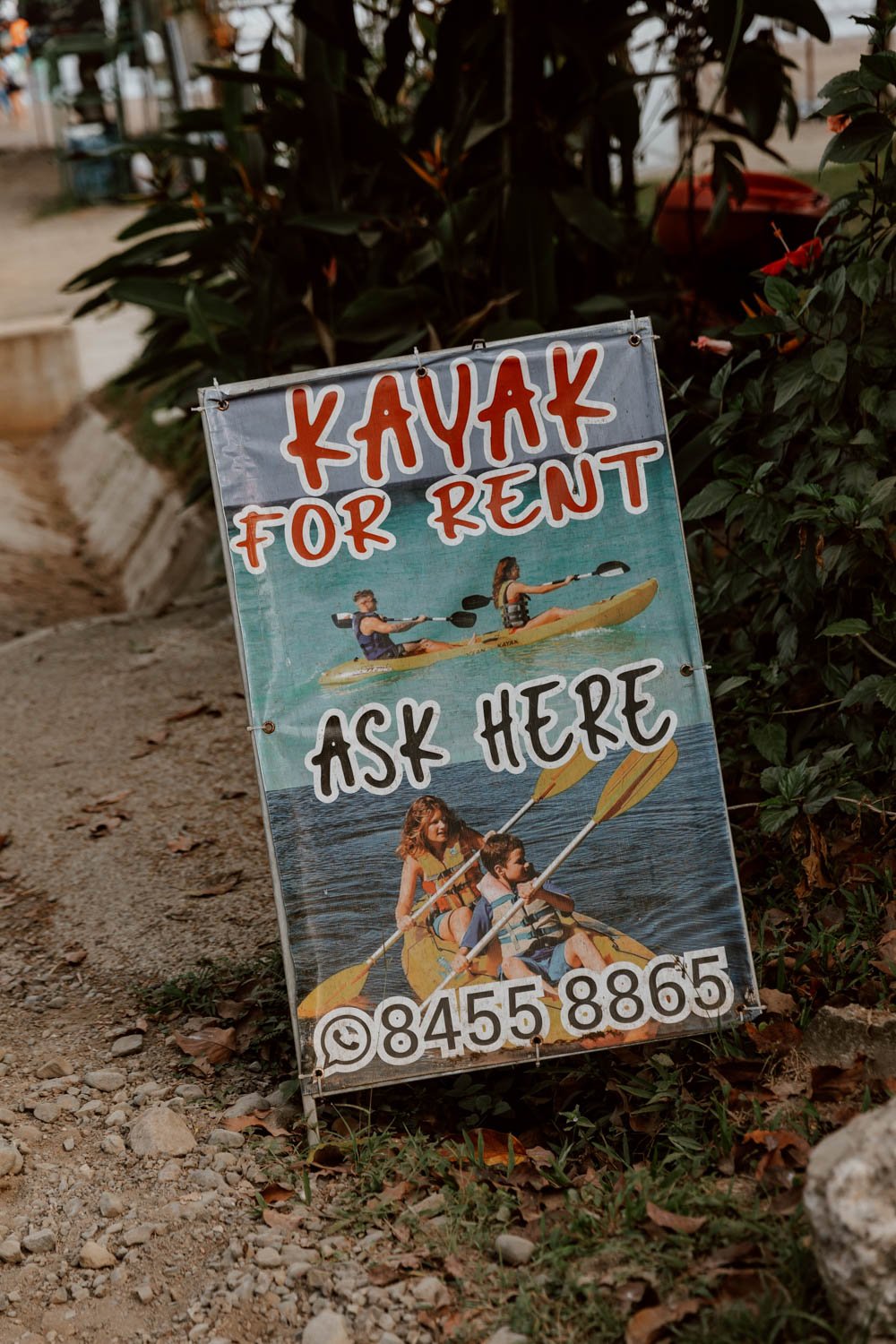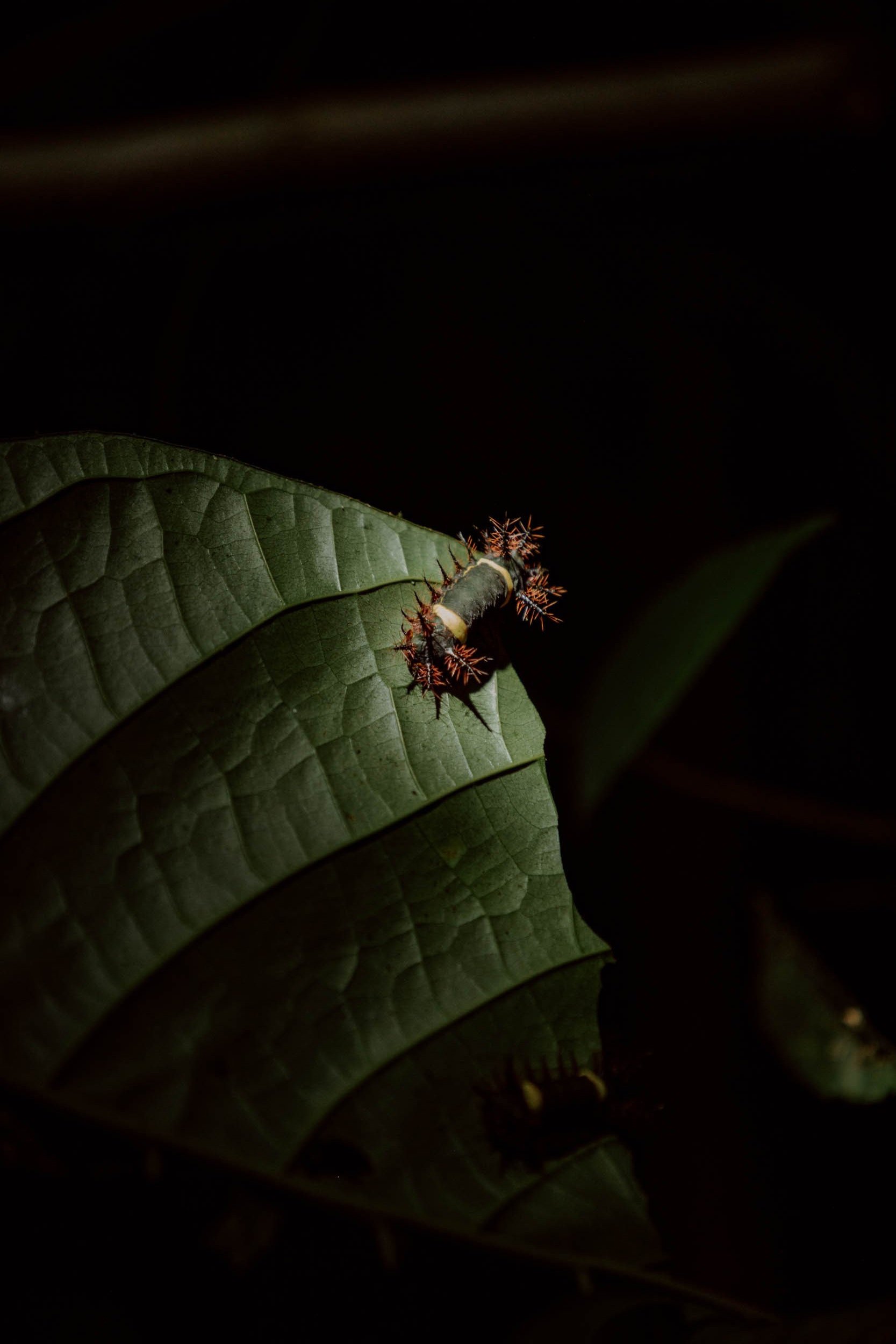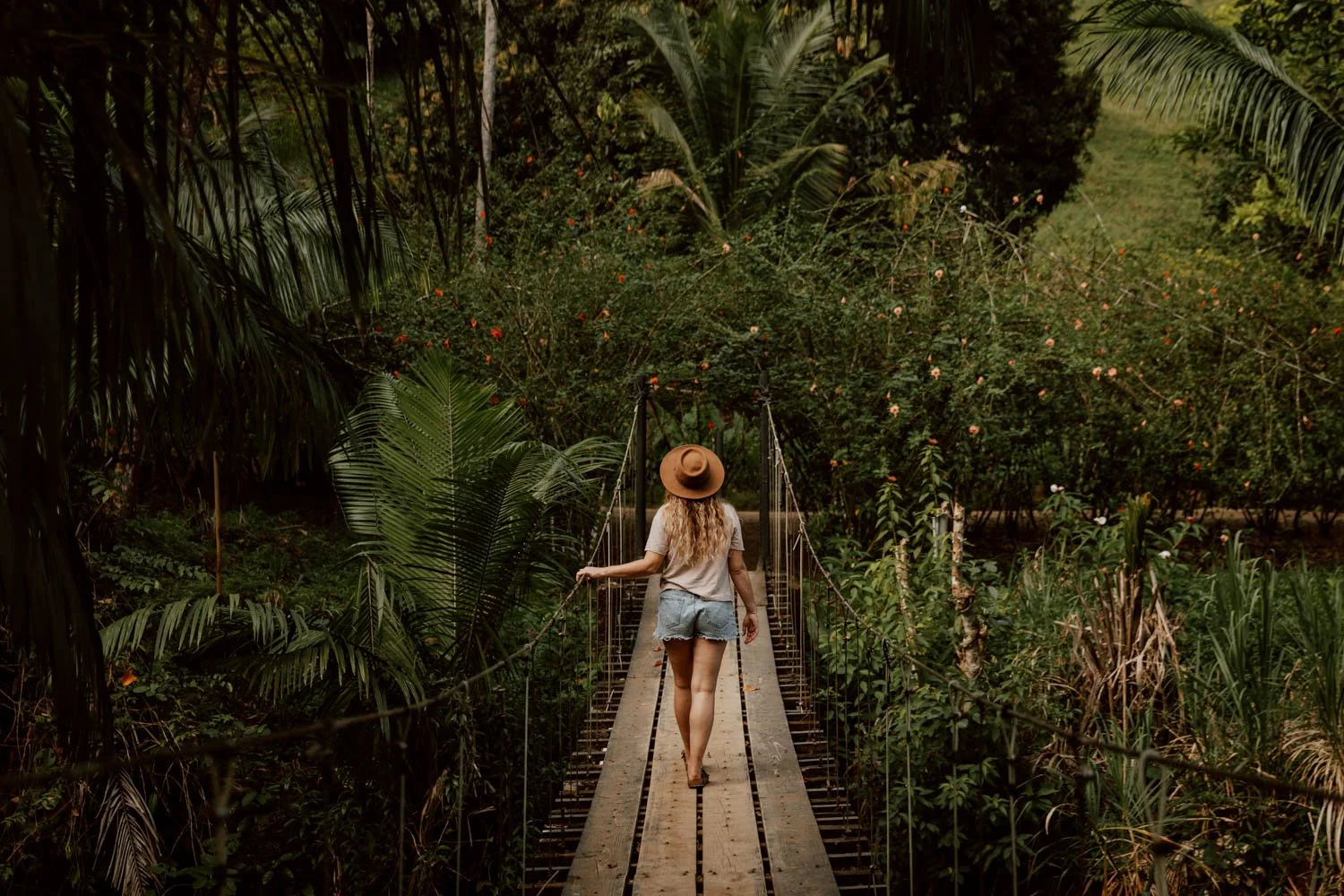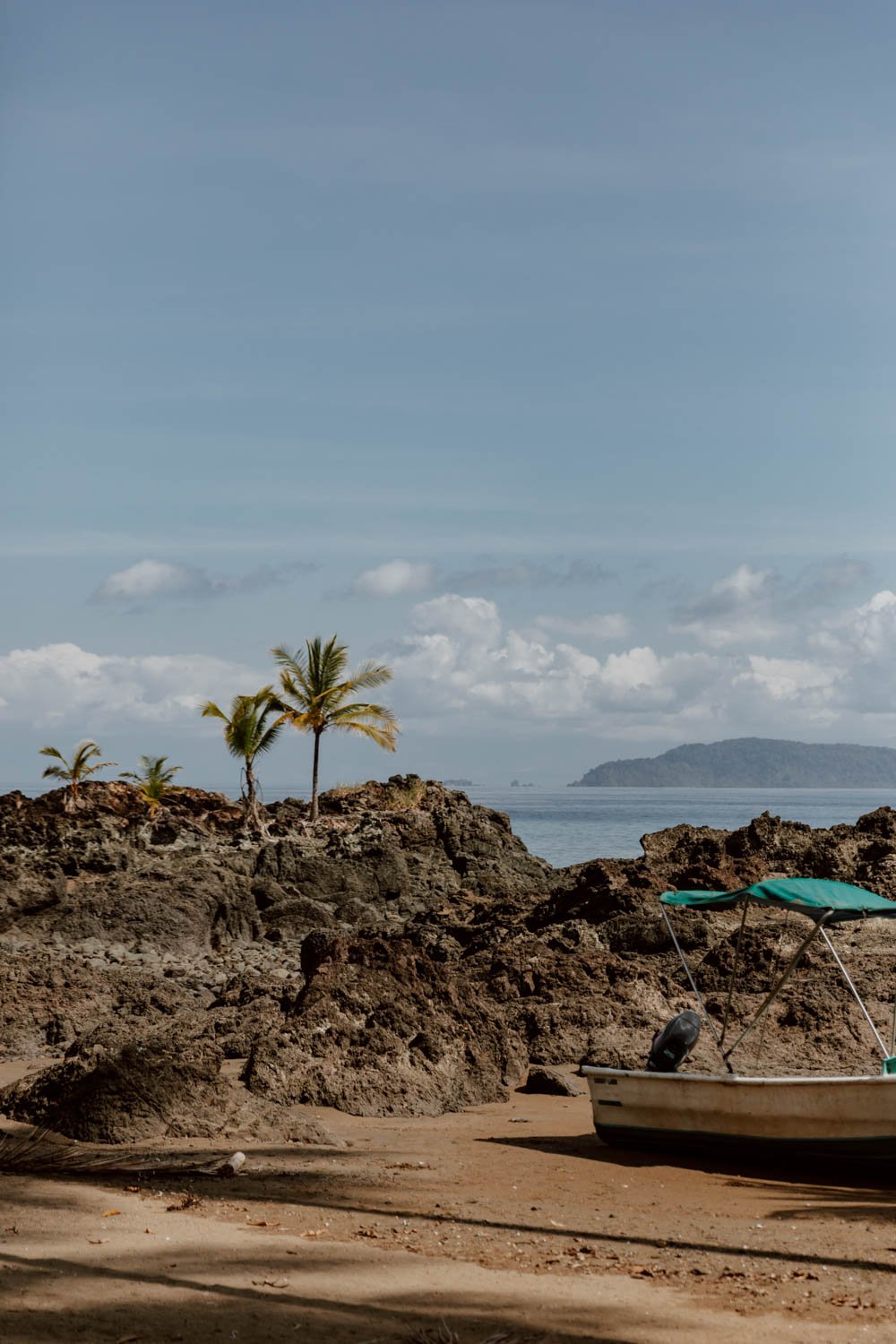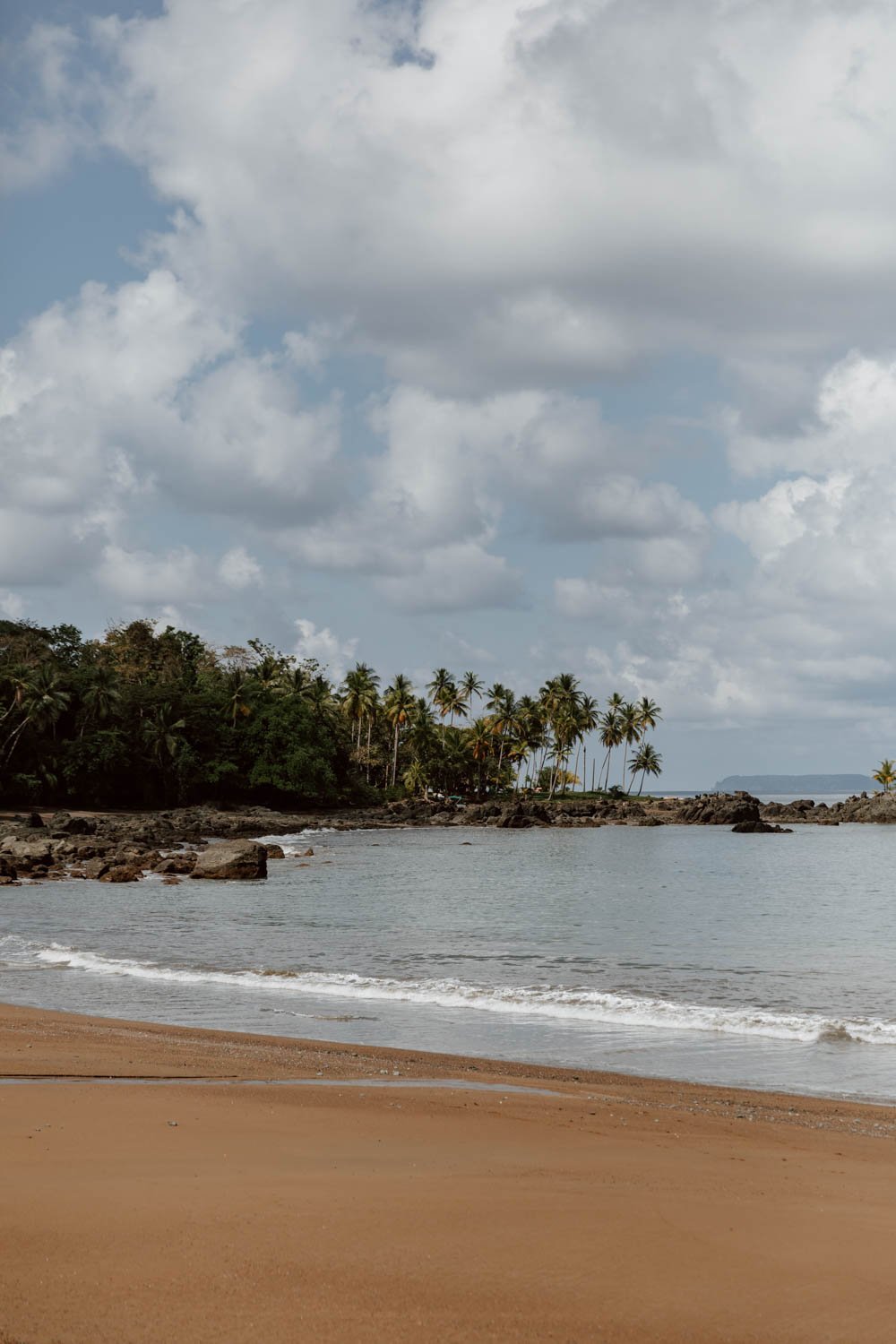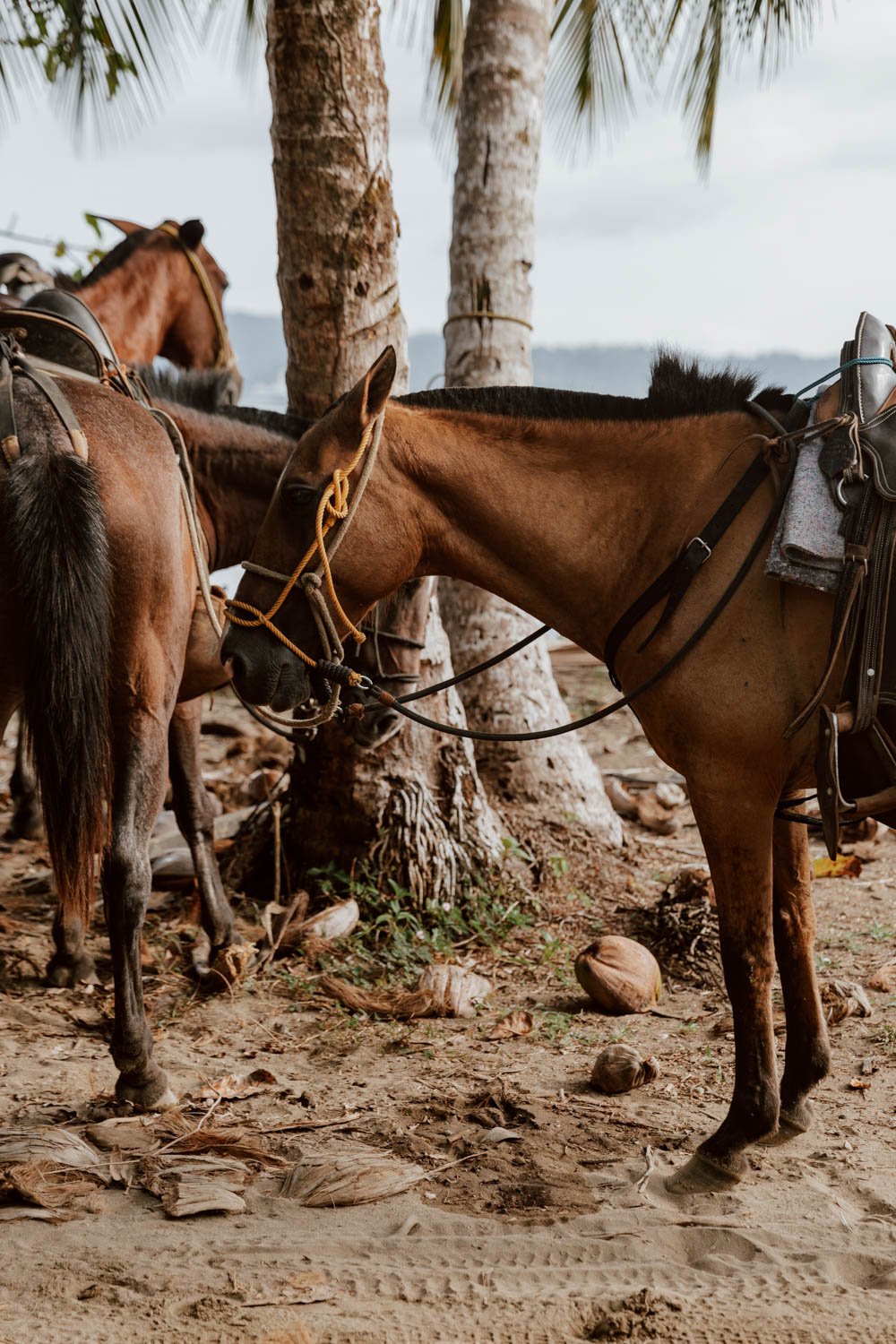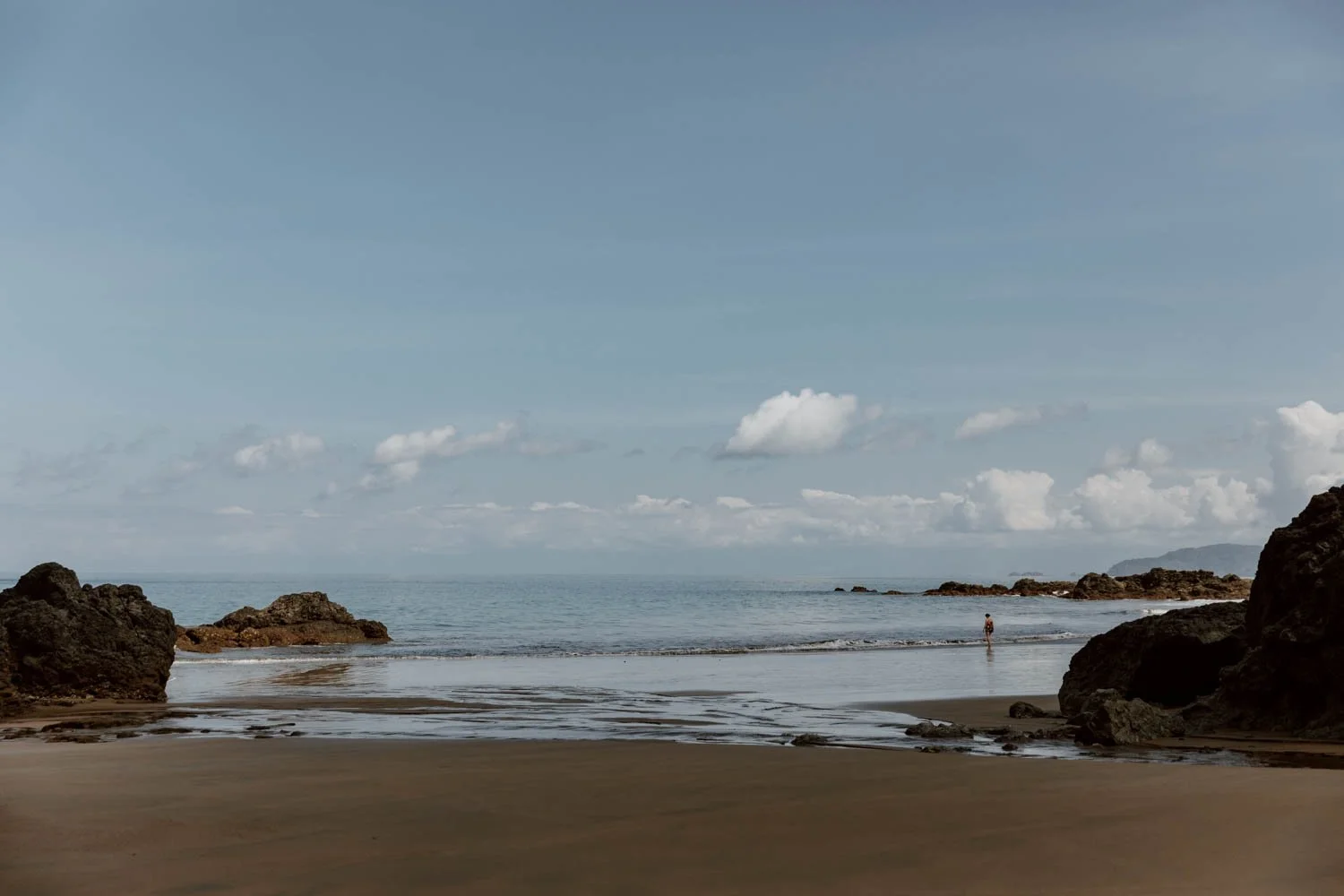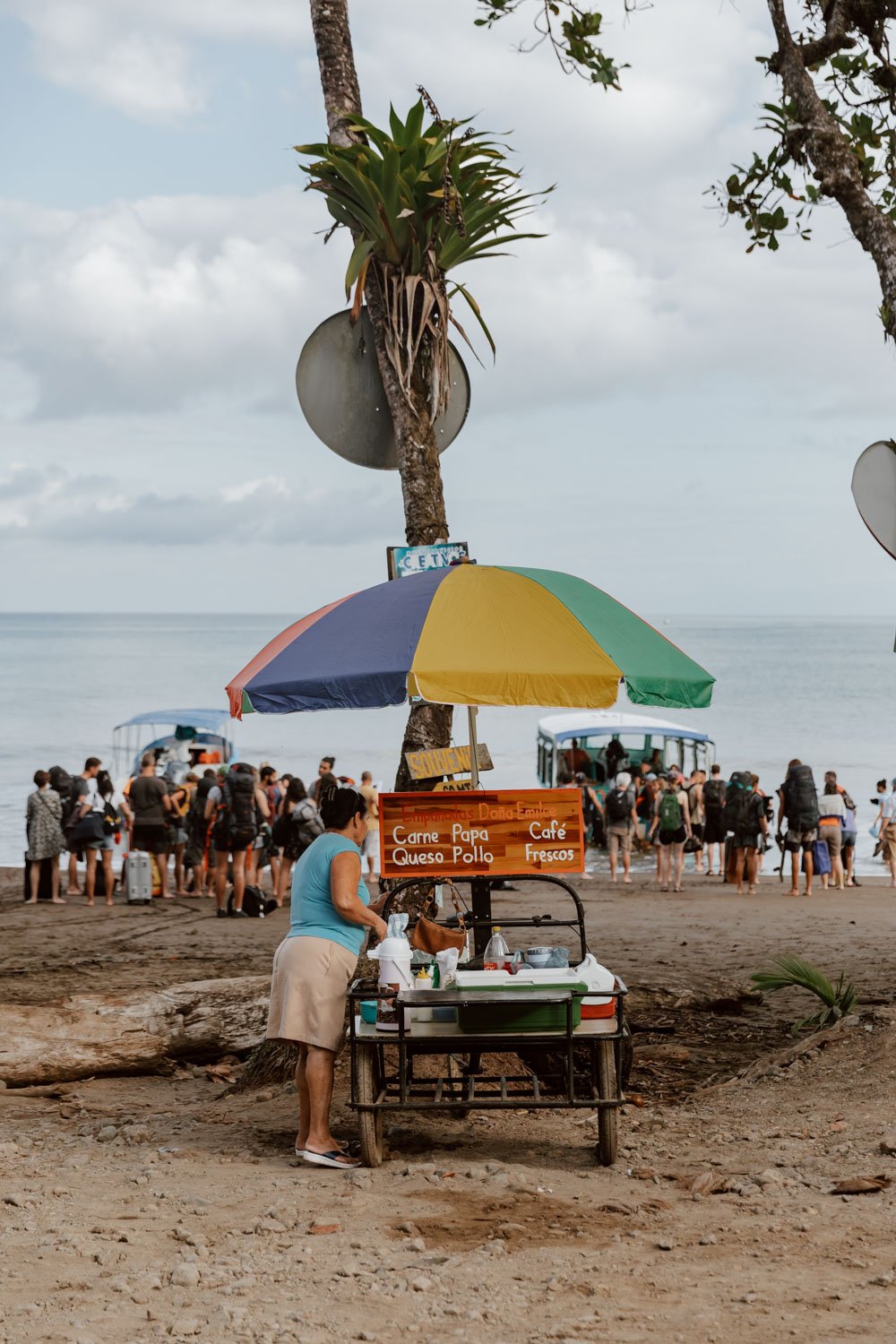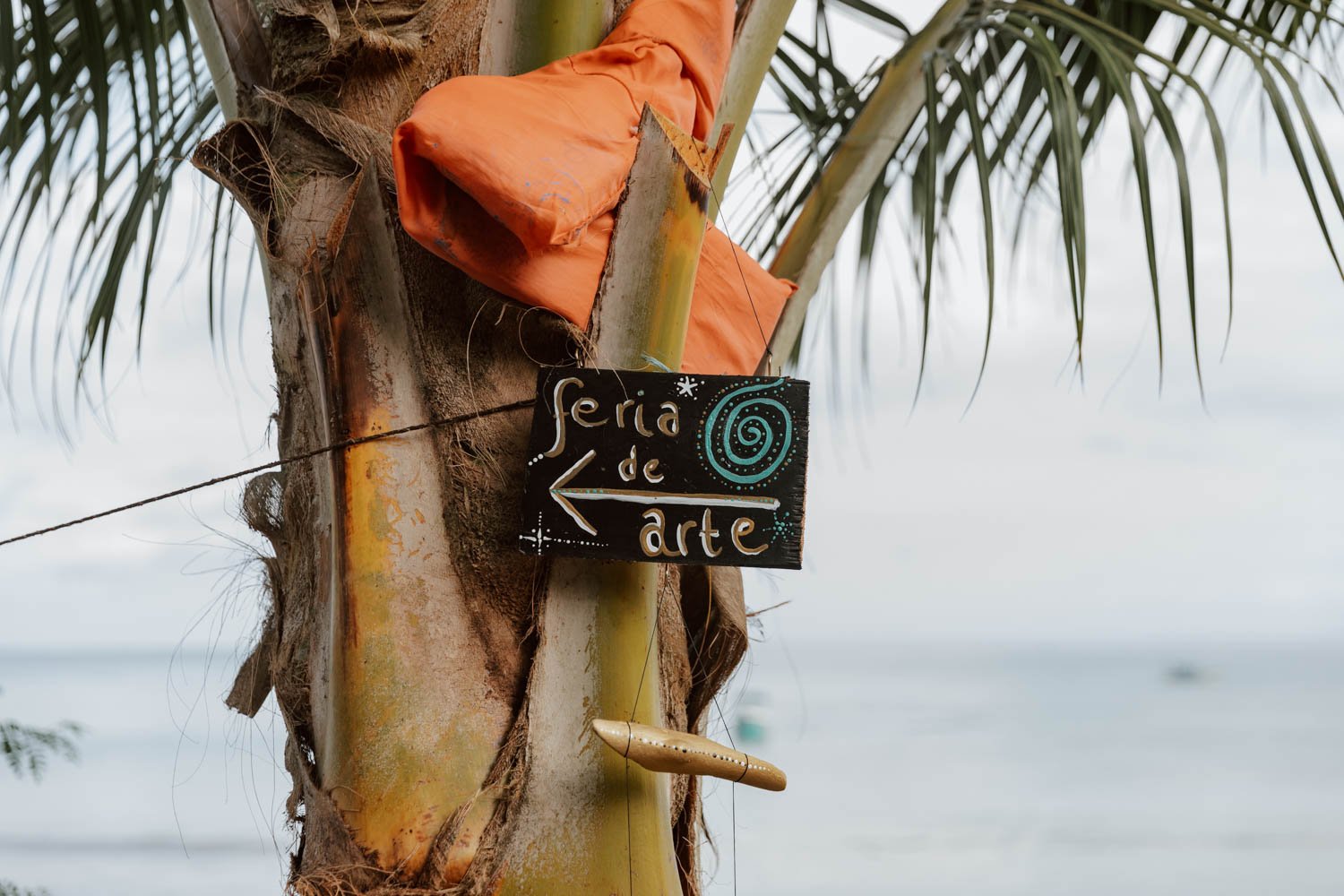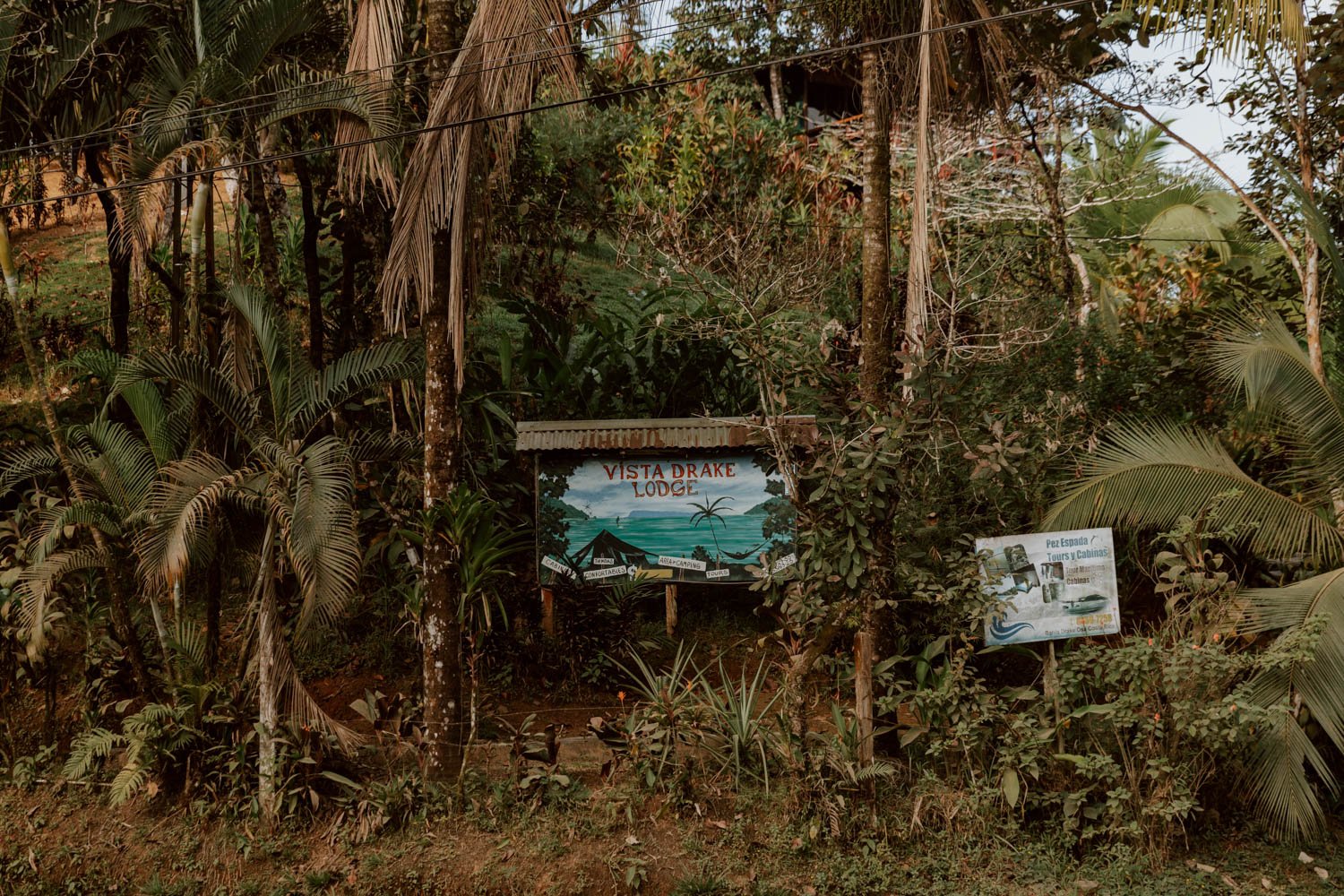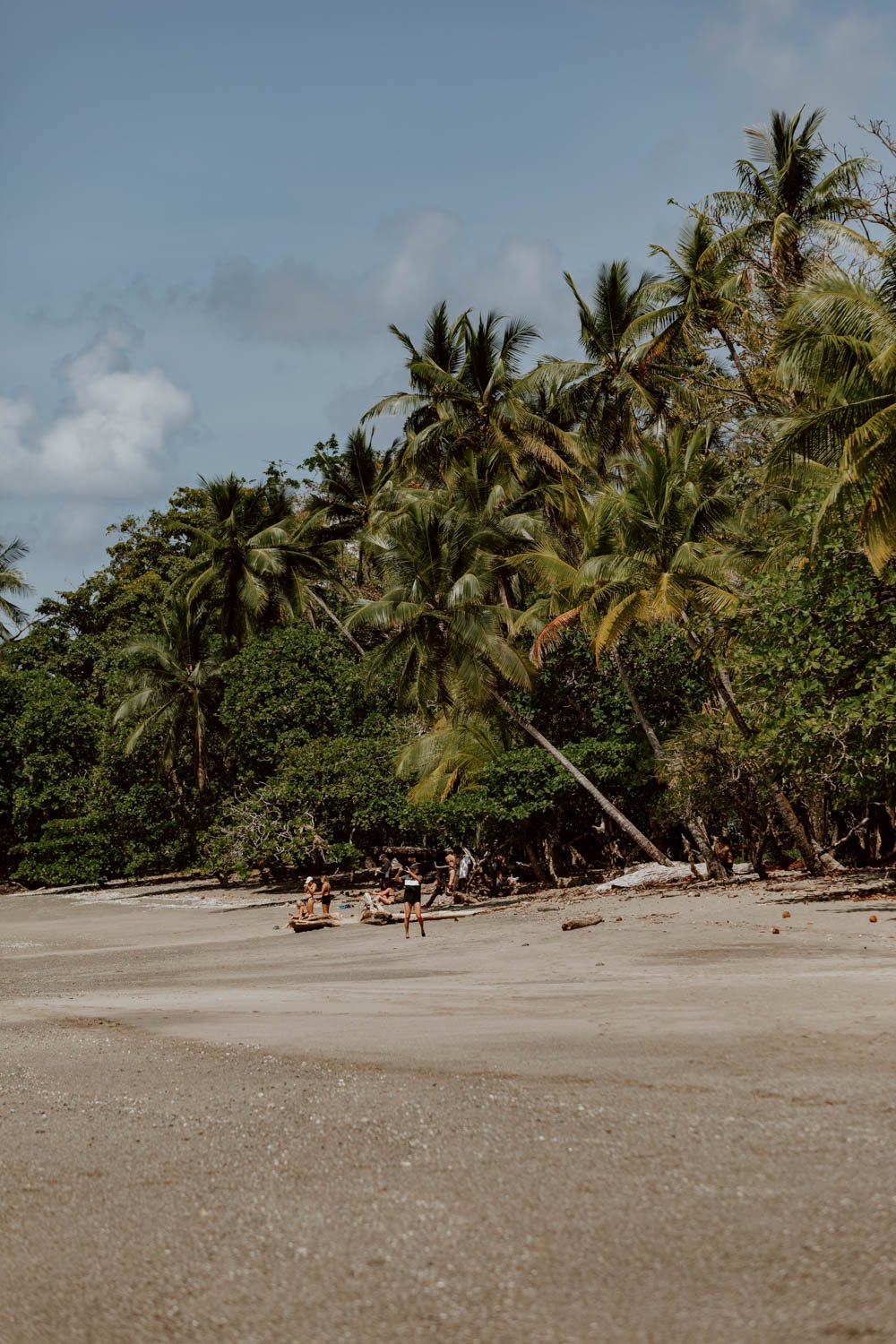Planning to visit Drake Bay in Costa Rica? Great decision.
Our guide’s got you covered.
Updated November 2023
It was a desire to feel wild that led us to board the boat to Drake Bay.
Off-the-beaten-track in southwest Costa Rica, more akin to an island than the mainland, it sounded like the sort place travellers dream of finding.
A place that’s cut-off between the ocean and rainforest, with dusty roads, untouched beaches, no high-rise hotels or clubs, lush vegetation, and not a tour bus in sight.
Exclusive, but not in the expensive way you may think; it’s exclusive because the only ones here are those who’ve chosen to go this far away in search of wildlife, seclusion, and answers.
In other words, Drake Bay sounded like a world away from several of the Americanised vacation resort towns further north on the Pacific Coast, as well as the slightly tiresome breathwork-yoga-kombucha crowd which pervades in several other coastal pockets of Costa Rica.
A place to have a proper adventure, rather than a pretend one - and it starts with the speedboat though the mangrove forests to reach it.
'Bahía Drake' takes up only a small part of the sweeping Osa Peninsula, a mammoth chunk of land that juts out into the Pacific ocean like a footballer's boot, but is the main destination for travellers looking to explore further into the vast protected rainforest, pristine waters, and stunning paradise beaches.
The hub is the village of Agujitas, with a small community of around 1,200 people living by and between the dusty roads and dense canopy; most of you will stay there or in one of the lodges set within the rainforest or by remote paradise beaches
An eco-tourism destination in its purest, best form, it’s the main jumping off point for the Corcovado National Park - the most 'biologically intense place on earth' - and the second best place to snorkel in Costa Rica. So, perhaps the most curious thing about Drake Bay is that it remains principally visited by three distinct types of travellers: the backpacker, couples looking for a unique, romantic escape, and those in search of intense, one-of-a-kind nature experiences within a vast, varied ecosystem.
Of course, some people will straddle two or three of those travel styles, but the core sentiment is that this is somewhere that people come to with purpose and adventure, rather than stumble across on a two-week trip.
Personally, our days in Drake Bay were the highlight of two separate trips to Costa Rica, and scratched an itch for an adventure away from the crowds that is sometimes difficult to find in the popular Central American country.
In this guide to Drake Bay, we've shared all the information and inspiration you need to decide whether to include it in your Costa Rica itinerary, and to plan the perfect trip there. From how to get there, the best things to do, accommodation picks for all travel styles, mistakes to avoid and essential travel better tips for a place as remote as this, we've got you covered.
This is our guide to Drake Bay, Costa Rica.
Drake Bay Essentials
Access / Most will arrive on a boat from Sierpe
Best / Time to visit is dry season (December to April)
Explore / The gorgeous tropical beaches on a day hike
Visit / Corcovado on a day trip or overnight tour - can be booked on arrival or in advance
Ocean / Go snorkelling or diving around Caño Island
Spot / Take a whale watching trip
Nature / Go bird watching, on a nature walk, into the mangroves or on a waterfall hike
Stay / Splurge at Jaguars Jungle Rainforest Lodge, opt for a beach-side jungle lodge, stay centrally at Casa Horizontes or opt for an excellent hostel like Casita Happy Feet
How To Get To Drake Bay
Travelling to the isolated, relatively inaccessible Drake Bay does require some planning, and it's not as straight forward as simply catching a bus or driving your rental car to point B on the map.
It is totally manageable though, and really fun as a travel experience too (unless you end up in the water at the final disembarkment point like a couple of people on our boat...)
For some of you, it will include a bus then a boat from Sierpe, and then potentially another boat depending on where you're staying. There are two daily boats from Sierpe to Drake Bay, with departures at 11.30am and 3.30pm.
For road trippers, access will depend on the season, your car type, your budget, and your comfort levels at driving on more remote roads and across rivers. It’s only doable with a 4x4 and some know-how, and absolutely best avoided in rainy season. Thankfully, if you're not able to drive all the way to Drake Bay, there's a well-established alternative of leaving your rental in Sierpe to make things easier.
There is a tiny airport with connections to San José and Puerto Jiménez, but we don't think you should be flying here from elsewhere in Costa Rica when the buses and boats provide an accessible, affordable, enjoyable and more sustainable alternative.
All roads (and rivers) lead to the small village of Agujitas, where you just walk along dusty roads to the place you've reserved, find an onward boat, or meet your accommodation provider on the beach to drive onward to their place.
We've written this overview on How To Get To Drake Bay, with transport information for most common start points to help you work out the best option for your itinerary and budget.
Best Time of Year To Visit Drake Bay
As we explain in 23 Things To Know Before You Visit Costa Rica, the country's west and east coasts have distinct climates, meaning travellers are usually best to focus only on one side on shorter trips.
For the Osa Peninsuala, and Costa Rica's Pacific coast more generally, the best time to visit for good weather conditions is during dry season (December to April). This will provide more reliably hot weather, little rainfall, and also mean the trails in Corcovado National Park aren't unenjoyably muddy. This is also peak season in Costa Rica, with crowds and rates highest at their highest, so accommodaiton and tours are best booked in advance.
This is also the better season for divers and snorkellers, and the season to spot northern humpback whales. We visited Drake Bay in February, and it was ideal.
However, given the nature-focus many of you will have here, you may wish to consider visits during the rainy season (April-November). According to our guide in Corcovado National Park, lots more animals come out due to the more pleasant temperatures and the jungle and vegetation is much more lush and vibrant. Crowds will be lower generally, and good deals available on tours and accommodation too, whilst southern migration humpbacks also arrive around July to November.
The downside, of course, if that there's a lot more rain, trails are muddy, the beaches won't be such a feature of your stay here. Visibility and conditions for snorkelling and diving will also be poorer.
In terms of months to avoid, September and October tend to see the most rainfall.
How Long Do You Need in Drake Bay
Short answer: it really depends on whether you're going to Corcovado National Park or not, and if you've booked your place in advance.
As daily permits are capped for the Park, and limited to 80 for overnights stays in Sirena station, it makes an awful lot of sense for shorter Costa Rica trips to book your tour place (which includes the permit) in advance so you can plan everything else in your itinerary around it with certainty.
If you do an overnight in the Park (which we did), then we'd suggest you need a minimum of four nights for your time in Drake Bay, or five nights if you'd like to add on a chill out beach or accommodation day after returning from Corcovado.
For day trips, you could shave it down to three or four nights.
Personally, making the effort to get here and leaving after just two nights would be a waste; we don't think anyone doing it right would leave Drake Bay wishing they had spent less time here.
If you want to just turn up and take your chances on finding a Corcovado tour, you need to be on a longer trip with nowhere in particular to be. Due to the cap on visitors, there’s no guarantee of a place opening up with the tour company you want or at the price point you’re banking on, especially in the December to April peak season. As we explain further in our main guide to Corcovado National Park, the permits were historically bought up in advance by larger companies, meaning smaller ones didn’t have any available for a few days if at all i.e. so you’d have to shop around a lot more, take what you’re given, or wait a few days before a space opens up.
For slow travellers, this may not be a problem - and there are far, far worse places in the world to have a few extra chilled out days - but if you're on a tight budget or schedule, it's not a good idea.
Recent rule changes will improve the situation, but it is still highly recommended to sort everything out before you arrive in Drake.
Lastly, for those of you coming here to stay specifically in some of the amazing accommodation in the hills for more of an adventure honeymoon vibe, then you could spend a very happy week here with lazy days snorkelling, diving, on the beach, or enjoying your setting, interspersed with your Corcovado experience.
The Best Things To Do in Drake Bay
A Paradise Beach Day
There's a video on our Instagram Stories highlight of a very sweaty, shirtless Andrew positively beaming.
The reason was the fact that, in the most visited country in Central America during the busy January tourism season, we had a postcard-perfect beach all to ourselves.
Followed by another one.
And then another one.
Genuinely, we didn't think that would still be possible in Costa Rica.
The sandy beaches of Drake Bay are untouched, remote, and fringed by jungle. They're not backed by large resorts or a strip of restaurants, and there's no road or cars in sight. Instead, it's just you, the ocean, a squawking macaw or two and something as close to a private paradise as you'll find in the modern age.
The legend goes that Drake Bay was named after the 16th century English explorer Sir Francis Drake after he left his treasures here; perhaps the real treasures are what he found on these shores.
The best thing is that there are several of them, and most can only be accessed on foot, by boat, or with a kayak. So, crowds will almost always be low, and close to non-existent if you walk further along the seceret gem of the San Josecito trail (more on that later).
The Best Drake Bay Beaches
Cocalito Beach | The closest to town, so the most likely choice for people looking for a slice of paradise but not wanting to walk too far for it. Due to this, it's going to be the 'busiest' of the remote collection of Drake Bay beaches. To reach Cocalito, it's a 45-60 minutes walk from town along the signposted walking trail Find it here on Google Maps.
Stay / La Paloma Lodge is a 5-10 minute walk away, whilst Cabinas Vista al Mar El Alemán is situated within the trees bordering the beach.
Playa Ricolito | Just a smidge further along than Cocalito, we think it's worth carrying on to here, especially if the above already has a few people on it. Find it here.
Playa Las Caletas | A fantastic pick for a day in paradise, just 10-15 minutes further along from Playa Cocalito. Quite a long stretch of the coast comes under the guise of 'Las Caletas', and the part you'll first encounter is a little underwhelming with campsites, basic cabins, and lots of flat grass. However, it's merely the accommodation section - continue on though to this part (maps) and this part (maps), and you'll be golden.
Stay / There’s quite a few options around here. Heliconias Garden Cabins is a more basic but popular accommodation (and right by the best part of the beach), whereas The Sunset Tucano Lodge is a high-end option, set within the jungle about a minute's walk from the sand.
In the approach part, you can find Copa De Arbol Beach & Rainforest Resort + Las Caletas Lodge + Corcovado Adventures.
Playa Danta / Punta Marenco | A nice little beach (maps) which probably won't get the numbers due to most people stopping at the earlier beaches listed above, or continuing on to the better known ones to come.
Stay / Lodge Punta Marenco is situated within the jungle that backs on to it.
Playa San Josecito | A really lovely stretch, and probably the best known Drake Bay beach after Cocalitos. It can also be accessed by boat taxi from Agujitas and some scuba tours will also have lunch stops here, so it can have more crowded moments than others (but again, this is all relative.).
There’s no accommodation on it.
Playa Rincon de San Josecito | A further 15-minutes walk through the trees, this is the most wild of the Drake Bay beaches. At nearly 2 kms long, you won't have trouble finding a spot all to yourself, and it's also the setting for quite a few popular accommodation options (both for backpackers and couples looking for something a little nicer). These accommodations can actually be reached by car or via the Playa San Josecito boat taxis, despite their secluded setting within nature.
Stay / Backpackers who don’t mind basic digs for the chance to be close to nature should consider Life For Life Hostel which is also home to the region’s Sea Turtle Marine Conservation Project. Alternatively, Ocean Forest Ecolodge offers better facilities and rooms, but with a similar off-grid and amongst nature vibe.
We should also note that the Agujitas village beach of Playa Colorada (maps) is ok if you don't want to walk far, or just need somewhere to flop after a morning exploration. However, it's the main entry / exit point for boats, tours, and cargo, so does see a lot of activity on the central section; therefore, it's best to walk to the right for a while to get a quieter stretch away from the traffic and noise.
Plan | Unless you're staying at accommodation near one of the more remote beaches, then you'll need to bring everything with you before setting off on the San Josecito trail from Agujitas - we explain this further in the next section. There are limited options for eating or drinking along the way, and they can't be relied upon 100%.
In terms of accessing the remote Drake Bay beaches, you can either:
1. Walk all or part of the Drake Bay coastal trail
2. Hop on a boat taxi from Agujitas to drop you off on Playa San Josecito
3. Join a Caño Island snorkelling tour (like this one) which includes lunch on Playa San Josecito.
4. Rent a kayak from your accommodation or at the beach in Agujitas
Walk The Drake Bay Hiking Trail
The best day we've had in Costa Rica, across two trips, was on this trail.
We set out early in the morning thinking it would simply be a fun thing to do, and a way to check out all of the beaches, but it turned out to be an unforgettable day.
A couple of hanging bridges, a river crossing, snakes, arguing pandemoniums of colourful parrots, lizards and iguanas, and a friendly dog in a neckerchief to follow along some of the way (not guaranteed on every trip I'm afraid!)
It gave us the spontaneous sense of uncrowded, outdoors adventure - which can sometimes be lacking in the country where it's usually ticketed and guided - and encapsulated the type of travel days we absolutely adore.
It may have ended with both of us absolutely exhausted, chugging beers, Powerades, and warm beers in hammocks, and Emily conked out for the evening with the fan on full power, but my goodness was it worth it!
The San Josecito Trail, also known as the Drake Bay Hiking Trail, starts in Agujitas and ends at Playa San Josecito. It’s 10 km each way, totally free to access, signposted in key sections, manageable for most travellers, and the main access point to all the beaches we talked about above.
Start early enough, and yours will be the first steps on virgin sand.
If it was anywhere else in Costa Rica, they’d have slapped a $20 entry fee on it, so enjoy it whilst it’s still like this.
We've shared all the key details and advice (you definitely need to plan ahead if walking the full length), in this post: Our Guide To The Drake Bay Hiking Trail (published soon)
Visit Corcovado National Park
For many of you, the only reason you'll be heading down to Drake Bay in the first place is due to its proximity to Corcovado National Park.
Heralded by the National Geographic as the most 'biologically intense place on earth', it covers a third of the Osa Peninsula and ranks as one of Costa Rica's most incredible nature experiences.
In a country that's famous the world over for its wildlife, that's no small feat.
Its accessibility, remoteness, ruggedness, price-tag, mandatory tours, and daily cap on humans keep the crowds to a very low level in comparison to somewhere like Manuel Antonio, but it’s also an experience that requires quite a bit of preparation.
Drake Bay acts as the main gateway for overnight Corcovado tours or day trips, but the strict caps on daily and overnight visitors to the national park means it's necessary for most travellers to book and plan everything in advance in high season; otherwise, you may face days waiting in Drake Bay before a slot opens up at a price-point you're happy with.
Also, for some budget backpackers, overnight experiences may be out of reach due to the very high combined cost of visitor permits, tours, and a bunk bed in the jungle (starting at $300 USD).
When planning our itinerary for the Pacific Coast, we decided that Corcovado fell under the category of 'unmissable experience', and shaped our whole budget and route around visiting it.
We've shared everything you need to know to plan - including more on the park's ecological importance, the various options to visit it, key costs, and insight on our overnight experience at the ranger station - in our main guide to Visiting Corcovado National Park.
If you're going to Drake Bay, chances are that you'll also be going to Corcovado, and we strongly recommend reading it before finalising your plans or deciding anything.
To get a gauge of availability for your dates, the following tours are highly-rated:
· Full-Day Adventure in Corcovado National Park from Drake Bay
· 2-Day Tour in Corcovado, Sirena and San Pedrillo Stations
Plan | 15 Things To Know Before Visiting Corcovado National Park
Go Diving Or Snorkelling in Caño Island Biological Reserve
This tiny forested island, a speck in the Pacific Ocean really, was saved in 1970s.
Leased by the Costa Rican government, a company had designs on developing it into an exclusive holiday resort, but a group of biologists protested and won. Since then, Isla del Caño and the 5800 hectares of ocean around it have been designated as a protected biological reserve, with nobody except the rangers living on it.
Due to this, Caño has been able to develop a reputation as the second best place to dive in Costa Rica (the first is Coco's Island, which is much further from the mainland), with an abundant number of tropical fish, sting rays, moray eels, reef sharks, the odd turtle or two, and lots of other marine life, as well as lots of coral under the blue. If you strike it lucky, you can also spot dolphins and whales on the boat trip in / out.
An unmissable thing to do in Drake Bay you may think? Well, not for us.
There are three reasons why we didn't go to Isla del Caño:
1. We had dedicated so much of our budget toward Corcovado National Park, that we simply couldn't also justify doing this as well, especially so early into a three-month Central America trip.
2. We didn't dive at the time, and have been lucky to snorkel in lots of amazing places already.
3. Our itinerary wasn't fixed, but we thought we may stop by the island of Utila, Honduras - the Caribbean island that's the most affordable place in the world to learn how to dive - so Caño didn't seem so important. Spoiler alert: we went, became Advanced Divers, and it was the best decision ever.
Now, if we were heading to Corcovado this year as divers, would we make the same decision? Probably not, but that doesn't preclude you from making the same decision as us based on your budget and plans for the rest of your trip.
Of course, if you're fortunate enough to be spending longer here for a honeymoon or standalone vacation, then heading out to Caño Island is a no-brainer as one of the best things to do in Drake Bay.
Details | A tour is necessary, which will include boat transport and snorkelling equipment.
This highly-rated small-group Caño Island snorkelling tour includes lunch and has fantastic reviews.
There are also snorkelling tours offered by operators in Drake Bay. For scuba diving days, check out Caño Divers and Drake Divers, or book this highly-rated diving tour for certified divers, which includes two dives and lunch on Playa San Josecito.
Note that it's also possible to visit Caño Island on tours from Uvita, a lovely little beach town further up the Pacific Coast, but Drake Bay is the better option due to the shorter journey times by boat out to the island.
Whale-Watching & Dolphins
We had ridiculous luck with whales on this particular Costa Rica trip.
The beach town of Uvita, further north on the Pacific Coast, is the best place in the country to spot them and we had the most fantastic morning out on the water there, watching a large humpback rise and fall multiple times, with several cheeky dolphins keeping him company.
And then, on our way back in the boat from Corcovado, what happened? More dolphins and a TRIO of humpack whales followed along for some of the journey!
So, we didn't feel the need to go on a specific whale-watching tour in Drake Bay, as we had already been quite spoiled. However, as our surprise spotting hints at, the Pacific waters around here are a great place to find them.
Book | A Dolphin and Whale Watching Tour in Drake Bay
Plan | If you really would like to see whales whilst you're in Costa Rica, we would suggest taking a look at Uvita too. Another lovely little place with beautiful beaches and dusty roads, that's a lot easier to access than Drake Bay, it offers the chance to spot wild whales year-round. You probably won’t do a tour in both, so just choose whatever works best for your itinerary and budget.
Find out more in this post: How To Go Whale-Watching in Uvita
A Few More Things To Do in Drake Bay
The Mangrove Forest | It was in a place called Rincon del Mar, in northern Colombia, where we learned about how vital mangroves are to the planet (it was aon the way back from mangrove forest that we were also almost certain our boat was going to capsize). In short, they suck up carbon, act as a huge water filter, a bulwark rising sea-levels, and also provide a unique habitat for various species.
They are still rather creepy though.
If you take the boat from Sierpe to Drake Bay, you'll wind through a section of the Humedal Nacional Térraba-Sierpe, and this is an experience in and of itself. The largest mangrove forest on the Pacific Coast of Central America, it's another of the Osa Peninsula's abundant ecosystems. You can find specific tours to explore the networks and roots of the wetlands and forest, which also double up as nature-spotting expeditions.
As we mentioned, you can rent your own kayak to hit up the beaches, but there are also tours offered by Augjitas beach and by operators in town - the offer we saw was $60 per person for a 3-4 hour guided tour in amongst the mangrove forests.
If you have a positive tour experience, let us know in the comments, and we'll happily share it here.
A Nature Night Walk | A walk in the rainforest to seek out insects, colourful frogs, nocturnal wildlife and immersion in the soundtrack of nature. Due to the cooler temperatures, you're more likely to come across certain types of animals than during the day in the primary and secondary forests, and nature guides in Costa Rica are wizards when it comes to spotting critters in the leaves and undergrowth. Sloths are quite common too.
Tracie - a biologist better known as 'The Bug Lady' - runs a very popular a three-hour tour (available to book online here), which is very educational too.
This Nativos night walk is also highly-rated.
The owner of the second guesthouse we stayed at - Casita Happy Feet - also offered this experience for guests, as well as other tours and excursions.
Birdwatching | We aren't twitchers, but saw a lot of them out and about on specialist hikes Drake Bay and Corcovado. Popular options include this Los Planes Birding Experience and this highly-rated sunrise birdwatch tour, starting in Drake Bay. There are also shorter sunset outings.
The Drake Bay Birdwatching company is an obvious choice to look at, whilst you can also find several options to book online here.
Horseriding | We saw a few groups doing this on the San Josecito trail and beaches, and it looked like a nice alternative way to explore the coast and forest. Most importantly, the horses looked well looked after and cared for. Most tour companies in Drake Bay offer this, but please ensure that the animals are in good condition before confirming anything.
Waterfall Hike | Long-time readers of Along Dusty Roads will know our strong opinions on the inevitable disappointment you'll face of visiting every single suggested waterfall in a single trip, and won't be surprised that we didn't make it to Naguala Waterfalls (maps).
Near the village of Los Planes, which is 5km from Agujitas, our research tells us that you can do this self-guided walk to the falls and enjoy swimming in several sections. It's free to enter.
There are also a few more falls on the grounds of the Naguala Jungle Lodge property, but they apparently charge a $25 fee for entry (including lunch).
As we didn't do this hike ourselves, we're hesitant to give more information than this, but recommend doing more independent research before setting out and preparing accordingly. If you do it, please do share more in the comments about the experience and whether you think it's worth doing.
If any of you are looking for a Costa Rican waterfall that we did visit, and 100% recommend you including in your itinerary because it's one of the best we've ever gone to, then check out our guide to the Nauyaca Waterfalls.
Where To Stay in Drake Bay
As we mentioned in the intro, accommodation in Drake Bay reflects the two main types of travellers venturing this far south in Costa Rica. So, there’s lots of simple, local-owned guesthouses, hostels, campsites and cabins, a dozen or so eco-lodges or romantic beach retreats set in the jungle or by the remote beaches, and nothing really ‘in the middle’.
There are, thankfully, no franchise hotels or high-rises in sight.
After our experience and location scouting, and deep-dive into reviews, we’ve done the hard work for you, and curated everything down to our pick of the best places to stay in Drake Bay. There’s something perfect for every budget and travel style - the long-term traveller on a budget, adventurous honeymooners, families, and two-nighters looking for something special - and we’ve broken it down into three categories for ease of reference: Eco-Lodges & Beach Retreats, Mid-Range Stays, and Backpacker Accommodation.
The main thing for you to decide is your budget and whether you want to be based in or around the village of Agujitas, a short walk from the best Drake Bay beaches, or in the secluded green jungle.
We’ve put ADR next to those we think are just that extra bit special (not all of them break the bank).
luxury Eco-Lodges & Beach Retreats
ADR Drake Bay Getaway Resort | This award-winning, boutique resort comprises five sustainably-built stilted cabins, perched upon the hills overlooking Drake Bay. Interiors offer a luxurious take on rustic-chic, with large sliding doors offering panoramic views of the ocean or surrounding rainforest. A truly breathtaking property! Find out more here.
Drake Bay Greenleaf | Located in the hills and forest above Agujitas, Drake Bay Greenleaf offers large, clean and modern bungalows but its real selling point are the incredible panoramic views from each room and terrace - ideal for getting up close with the region’s spectacular wildlife. The reviews are truly exceptional (a rare 9.9!), with the hosts and food spoken very highly of. Find out more here.
ADR The Jaguars Jungle Rainforest Lodge | At the very limit of Drake Bay, right on the edge of Corcovado National Park, this incredible ecolodge (entirely powered by renewable energy) is the perfect place to get lost in paradise. Its isolated location means all meals are included, and it offers a variety of rooms including deluxe doubles, beach cabins and even dorms. Find out more here.
Copa De Arbol Beach & Rainforest Resort | This gorgeous eco-friendly resort is comprised of eight large cabins, all set amongst lush forest and many with ocean views. Has an on-site restaurant, and a truly stunning pool area. Find out more here.
Some of the above will personally collect you from the main beach at Agujitas on arrival with a private boat service.
Mid-Range Stays
If looking for a hotel, it’s important to note that the vast majority of accommodation options in Drake Bay actually fit within the luxury or budget-friendly bracket; those hotels which are priced within the mid-range price point are, on the whole, more basic than you would perhaps expect for the price. It’s usually the location that you’re paying for.
Airbnbs however do tend to provide better quality for similar (or lower) nightly rates.
In Agujitas
Casa Horizontes | This charming little B&B is located a short walk from Agujitas beach, set within lush gardens and with lovely views of the Bay. There are a variety of rooms on offer, but do note that those with shared bathrooms don’t really look worth the money when compared with other accommodations in the area. Meals can be provided, and guests speak very highly of the helpful owners. Find out more here.
Sunset Lodge | Whilst the interiors of this super popular lodge are solidly middling, the incredible private terraces that accompany each are truly outstanding with each offering wonderful views out over the surrounding landscapes (many with sea views) - there’s even a room with a private plunge pool! It’s located only a short walk from the centre of town, but do note that this includes a walk up a steep hill. Find out more here.
Another popular mid-range option in Aqujitas is Vistadrake Lodge.
Jungle by the Sea | This large open plan casita, perched 90 metres above the Bay, is ideal for a family. It’s more on the rustic side, but the views are truly outstanding and the reviews excellent. Note that if you plan to drive up to the property, you’ll need a hard-going 4WD. Note that this property is currently offline.
The Cotingas Lodge | One of several cabins within a nature lodge, this accommodation is located just a short distance from the village centre, but its location atop a hill provides excellent views. Has excellent reviews and is really well-priced for the standard of accommodation. Find out more here.
Remote or Beach
Punta Marenco Lodge | By far one of the best mid-range options in this list, Punta Marenco is comprised of a number of lovely little timber-framed bungalows - the majority with large terraces and exquisite views - behind the charming little cove, Punta Marenco. Rooms are large and furnished/decorated to a high standard. Find out more here.
Ocean Forest Eco Lodge | Offering proof that rustic done right doesn’t have to be basic, this lovely little lodge is comprised of a number of charming little bamboo cabins in a gorgeous beach and jungle location. Lots of wildlife spotting opportunities, and, if you’re into yoga, a big plus is the large yoga house. Find out more here.
The Sunset Tucano Lodge | Located behind Playa Las Caletas, this popular locally-owned accommodation offers large, clean and comfortable rooms, and previous guests speak very highly of the staff. Offers meals. Note that this lodge is located up a steep hill so is not ideal for those with mobility issues. Find out more here.
Hotel Jinetes de Osa, Corcovado Adventures, Playa Ganadito Ecolodge and Drake Bay Bundgalow are other popular choices if looking for something similar.
Poor Man's Paradise Lodge | Located on Playa Rincon de San Josecito, this rustic lodge is a little more basic than the price perhaps suggests (from around $180 a night), but the setting is glorious and guests speak very highly of their experience her. Check prices and availability here.
Alternatively, consider the stunning Kinkajoungalows (ADR), a collection of bungalows that are part of the Poor Man's Paradise, but infinitely more stylistically beautiful. Honestly, at the mid-range price point, these are probably our top pick! They’re not available on booking.com currently, but you can find each bungalow on Airbnb - start with this one, this one, or this one.
Jungle Bungalow | This charming little rustic cabin, owned and managed by a local family (and set within 100 acres of their own land) is also located on Playa San Josecito. They have a few properties on the land, but the isolated nature of the cabin means you needn’t be disturbed by other guests. There’s also an on-site restaurant if you don’t fancy cooking in the modest cabin kitchen. Find out more here.
Jungle Loft | Although the location of this Airbnb means it’s unlikely to suit those without a car, if you value nature over beach, this compact but modern little cabin, with its jungle-enveloped balcony, is worth checking out. Find out more here.
Budget friendly / Backpacker Accommodation
In Agujitas
Casita Happy Feet (ADR) | This little guesthouse is where we spent the bulk our time in Drake Bay - and we’d definitely recommend it. The owner, Javier is full of advice and insights (plus is a guide that offers tours), and the modest rooms are clean and comfortable. Decent common area, guest kitchen and good breakfast included in price. Find out more here.
Our first night in Drake Bay was spent at Allegra Hostel which offered really great clean, large doubles with wonderful terrace views. However we’d strongly recommend avoiding the dorms which looked really quite unpleasant to stay in.
Looking for a good dorm bed? Be sure to check out Sukia Hostel. Great location amongst the trees, but actually only a short walk from the centre of Drake Bay.
Jade Mar | Offering perhaps the cheapest private room we’ve encountered on our hunt for the best accommodation in Drake Bay, Jade Mar is a surefire winner for those travelling on a bit of a budget. The smallest room with shared bathroom costs as little as $25 a night, but they also have larger options. Reviews are consistently great across the board. Find the cheapest room here, and one of their spacier rooms here.
Hotel Cabinas Murillo | This centrally-located hotel is an ideal choice for those travelling on a bit of a budget who prefer a hotel over a hostel. The rooms are large, comfortable and most have a large balcony with views out to the ocean. Price includes breakfast, and the reviews are excellent. Find out more here.
Casa Jade | The perennially popular Casa Jade, whilst technically a hostel, is actually based around individual little cabins rather than offering any dorms (although they do have larger cabins with multiple beds if travelling as a group). The cabins themselves are large, comfortable and clean, set within gardens, and offer wonderful views (many out over the ocean). Offers a shared kitchen, a super helpful owner, and has really great reviews. Find out more here.
Remote or Beach
Life is Life Hostel | A little like marmite, some will love this super remote accommodation on Playa Rincon de San Josecito, but the incredibly basic digs and relatively high on-site food costs will not appeal to everyone. Part hostel, part ‘turtle rescue project’, it certainly provides an interesting experience but do note that to access it you’ll need to pay $10 USD to take the boat or walk the 10 kilometres from Drake Bay. Find out more here.
Located at the northern end of Drake Bay (towards the airport) are a number of popular, remote and budget-friendly accommodations, including GreenPoint Hostel, Cabinas Manolo Drake Bay and Citronela Lodge Corcovado (we prefer the latter). These are not ideal if you’re not keen on walking into town as it’s quite a distance, but would suit those looking to stay a little more off-grid.
Located in a similar area as above, you can also find the Jungle Bungalow. A private property, this charming little bungalow requires a car to reach but offers a wonderful nature retreat at an exceptionally good price. Definitely worth checking out if you want to go off grid. Find out more here.
Travel Tips For Drake Bay + Amenities & Facilities
Understanding the Layout
Agujitas is the hub for supermarkets, transport, eating out, and pretty much everything else you'll need. Standing on the beach - the 'port' for all boats - with your back to the sea, the layout is:
· A dusty road to the left going up the gentle slope of hill, a curve, and then the central 'fork in the road' with the supermarket and other businesses. At the fork, you can go left and down toward some accommodation and businesses, or continue straight and up toward some more.
· Go right at the beach, and you'll join the San Josecito trail eventually and arrive at some nice spots for sunset drinks, or you can take the first left and go up the road to accommodation like Drake Bay Getaway Resort or Drake Bay Greenleaf.
As we mentioned, you're grouped on the boats from Sierpe by your accommodation, so hosts should should be aware of your arrival already and depending on where you're staying will either meet you at the beach to take you and your luggage up (walking or car), have a private boat waiting for you, leave you to just walk up the dusty road to the village, tell you to connect to the San Josecito boat taxi, or leave you to work it out!
This is why it's always a good idea to contact them ahead of travel, just to make sure!
Cash & Currency
There is no ATM in Drake Bay, nor is there a major bank.
A number of locally-owned accommodations don't have a card machine, and the tour companies and accommodations that do will usually charge a usage fee in the region of 2-5%. Due to the cost of Corcovado tours and Caño Island day trips, this could rack up if you're putting everything on card.
This means, whatever your travel style, you should take a stash of colones and crisp US dollars with you for daily costs, in addition to an emergency back-up.
Some tour companies prefer Paypal, but we know that some travellers won't be used to using that. For our Corcovado tour, the price was going to be quite a bit less if we paid in cash, so we carried more than we would usually be comfortable carrying and settled the bill as soon as we arrived. Unfortunately, the company was very reluctant to provide a receipt for this (tax purposes, common in Costa Rica).
Palmar Norte, where some of you will catch a bus to Sierpe, does have a cash machine but we would highly recommend not relying on it. Instead, take out in somewhere like San José or Uvita a couple of days before travel, and separate, stash, and store accordingly between your person and day pack. Sierpe also appears to have a cash machine, but we don’t recommend relying on it.
Also, as we mention in 23 Things, remember that lots of businesses in Costa Rica charge 13% tax on TOP when you’re paying card (but not when you’re paying in cash).
However, we understand that some of you may prefer to just cover any additional cost for using your card vs. the inconvenience and concern at carrying lots of cash. In that case, we'd recommend booking as many tours and accommodations - the big ticket costs - online in advance, and paying with your card whenever you can, but still bringing more hard cash than you usually would.
Read our Corcovado guide for more advice on highly-rated tours + experiences you can book online.
As a last resort, you can use your card to withdraw cash from some of the super markets and other businesses in town, but they'll charge a mark-up in the region of 10% for the service.
Shopping & Supplies
The Mercadito de Osa Drake Bay in the centre of the village is very good, and has everything you'll need for hostel cooking, a beach day, or hiking snacks, with a really good daily supply of fresh fruit and veg.
The other option is Super y Licorera Familia Castro (maps), which is just down the hill and has quite a random selection of goods. As far we can recall, it was possible to pay at both with card. Prices are a little higher in Drake Bay for some items, but not at a prohibitive or price-gouging level.
There's also a fruit guy up at the top of the hill.
However, you should bring all your suncream and bugspray in advance. These two essentials are always 1. expensive 2. poor quality or 3. a combination of both in Central America, and we always bring enough of the brands we like and trust in our backpacks.
For bug spray, Incognito is a DEET-free plant-based product which really works, and we've travelled with it for year. For suncream, go with whatever you prefer for your skin and the environment, but we've found Mimitika to be the best for us after lots of bad experiences. Cruelty-free and reef-safe, it guards against UVA and UVB and smells lovely.
Eating out in Drake Bay
+ Eating out options are a bit limited in Agujitas, and in our limited experience the quality was not great relative to prices at some establishments. It's good to support local businesses whenever you can - especially the enterprising lady selling empanadas at the beach in the early morning.
For certain popular places, like Casa El Tortugo Drakes Kitchen, it's a good idea to reserve in advance for high season (when we went to eat there, it was full).
Remember that in Costa Rica, tax (approx. 13%) and tips are in addition to most advertised menu prices.
+ If staying at one of the more secluded or remote accommodations, you will tend to eat there more often than not. The higher-end places are quite often all-inclusive, but hostels and some others charge extra for lunches and dinners; the cost is usually a bit more than you may expect, so keep an eye on this if on a budget.
Water In Drake Bay
+ It's not safe to drink the tap water in Drake Bay. Lots of accommodation will provide filtered water refills, but not all. You have three options:
1. Use your refillable water bottle as often as possible.
2. Depend on single-use plastic bottles of water from the supermarkets
3. Invest in a travel filter water bottle, which makes drinking water everywhere safe to consume and significantly cuts down your contribution to plastic waste with limited recycling potential. We've used our Water-To-Go bottles for the last six years and swear by them - you can find them here on Amazon, but if you do purchase directly from their website, you can also use an exclusive discount we negotiated for our readers to get 15% off everything (just use ADR15 at the checkout).
4. Drink more beer
The realities of travel means that options 1,3, and 4 sometimes won't be enough, and this was definitely the case on our San Josecito Hike. If you're planning on doing that, then you will need to pack extra bottles of water as there were not enough water sources (except the sea) along the trail to fill up our filter bottles or places to refill our water bottles.
Where to Next?
15 Things to Know Before You Visit Corcovado National Park
13 Wonderful Things to Do in Uvita
7 Things to Know Before Visiting Manuel Antonio National Park
How to Visit Nauyaca Waterfalls | An Unmissable Place in Costa Rica
The Best Things to Do in San Jose, Costa Rica
The Very Best Things To Do In Monteverde, Costa Rica | A Traveller’s Guide



